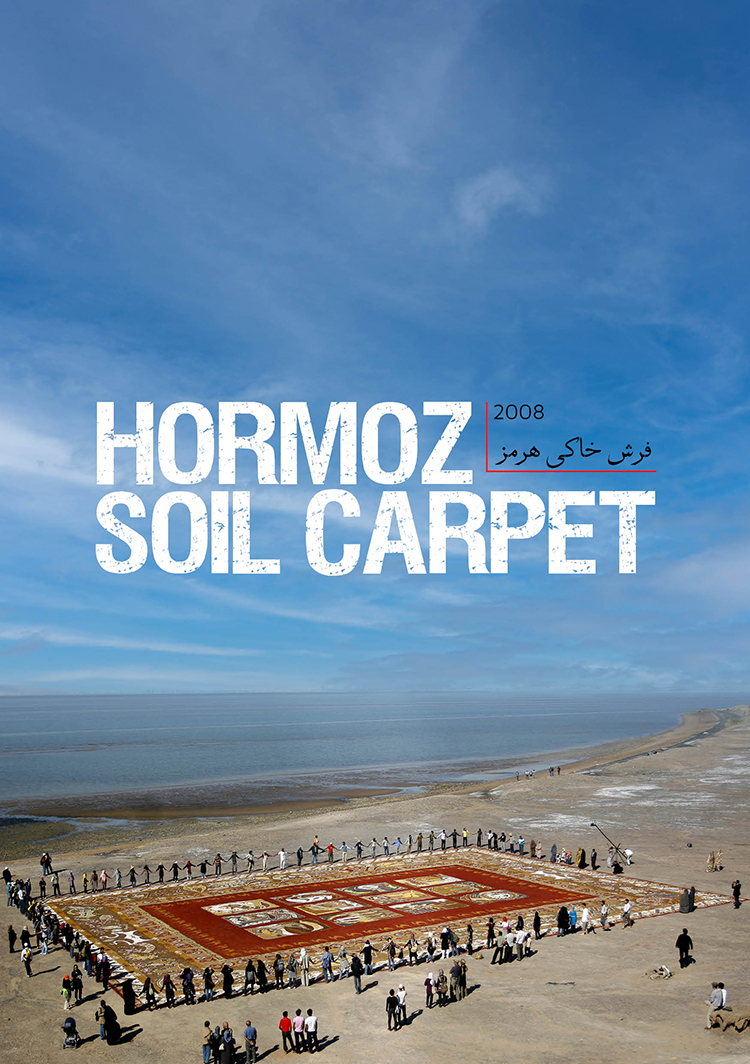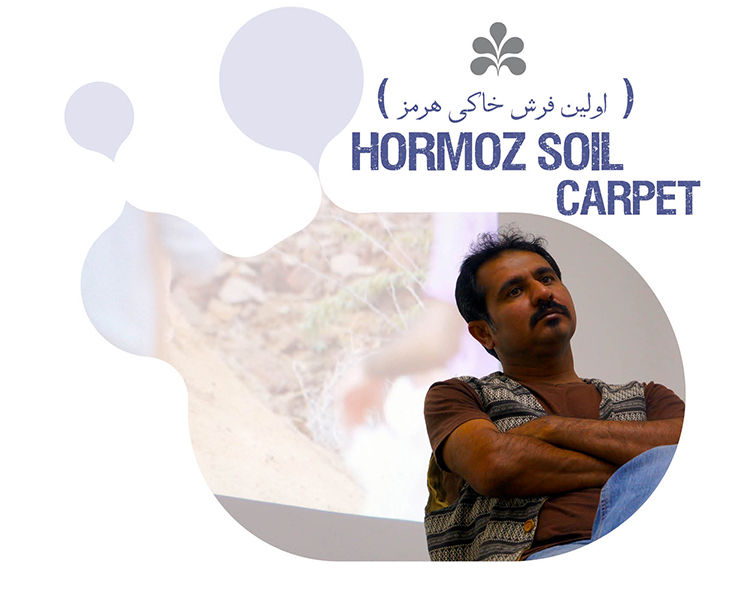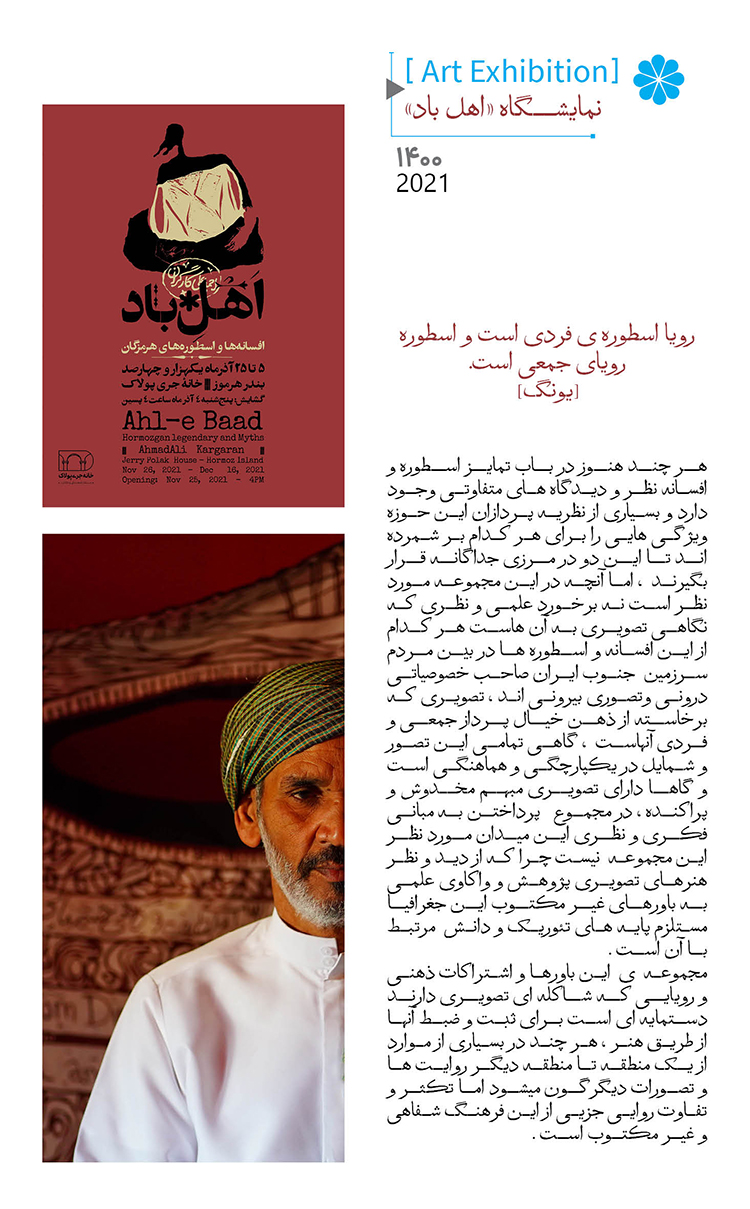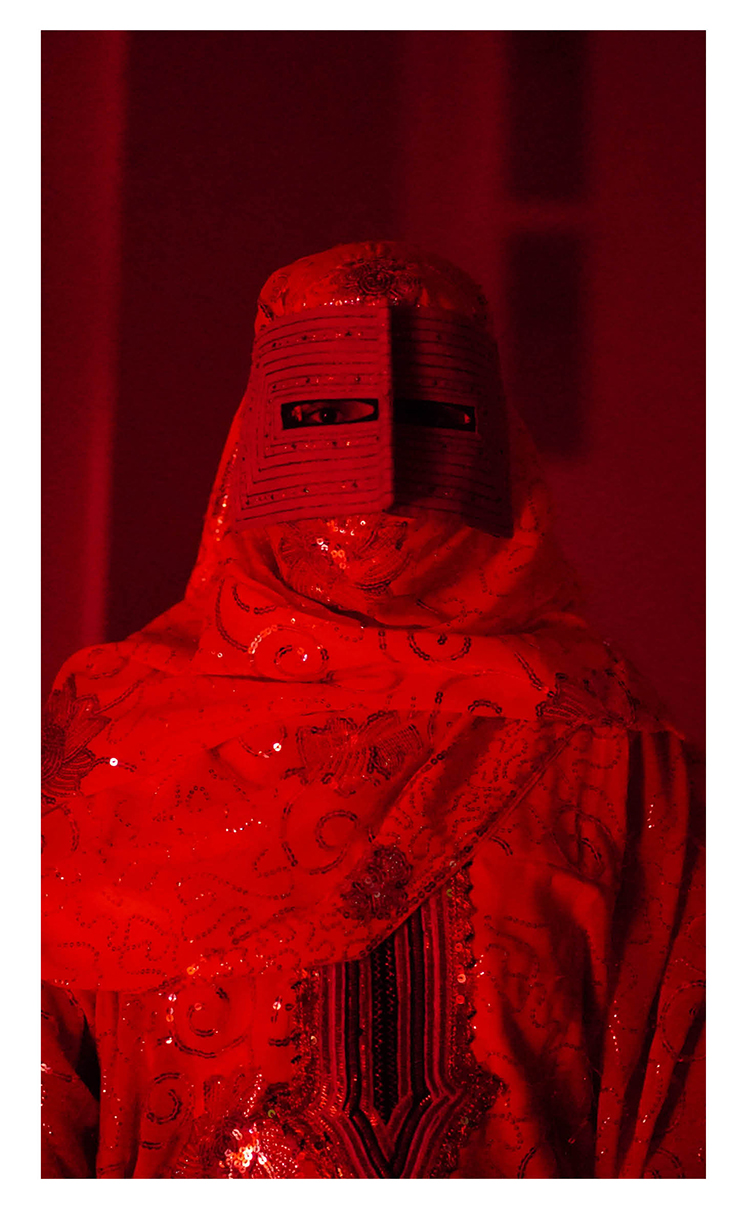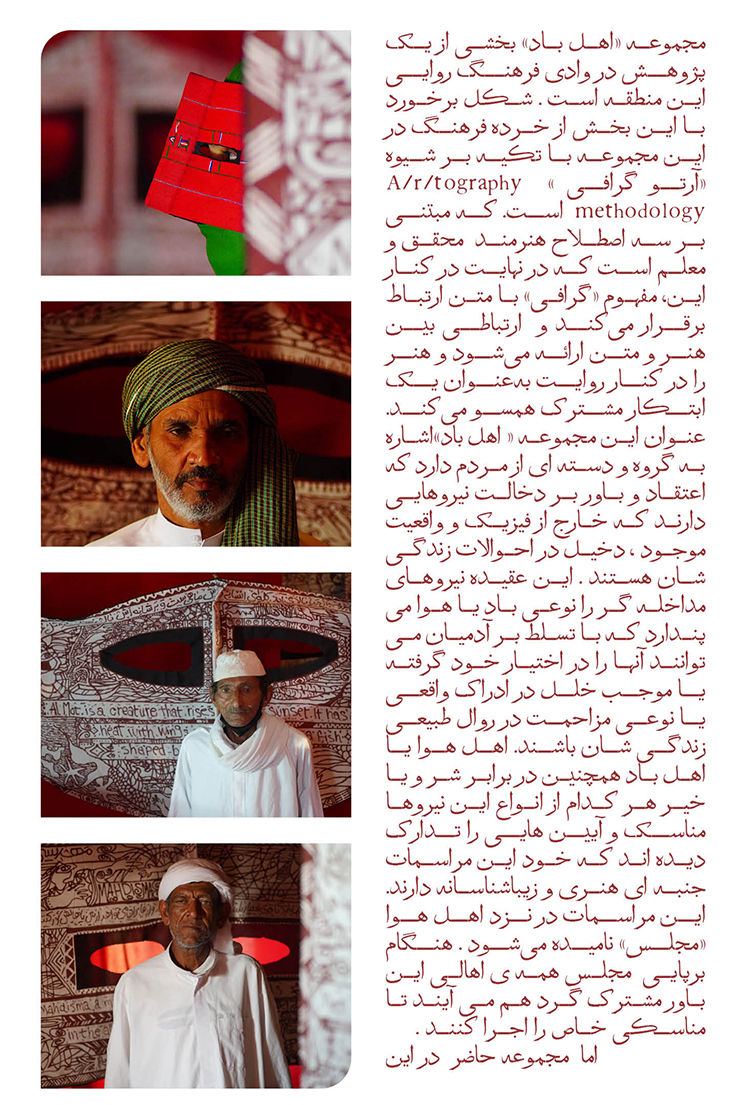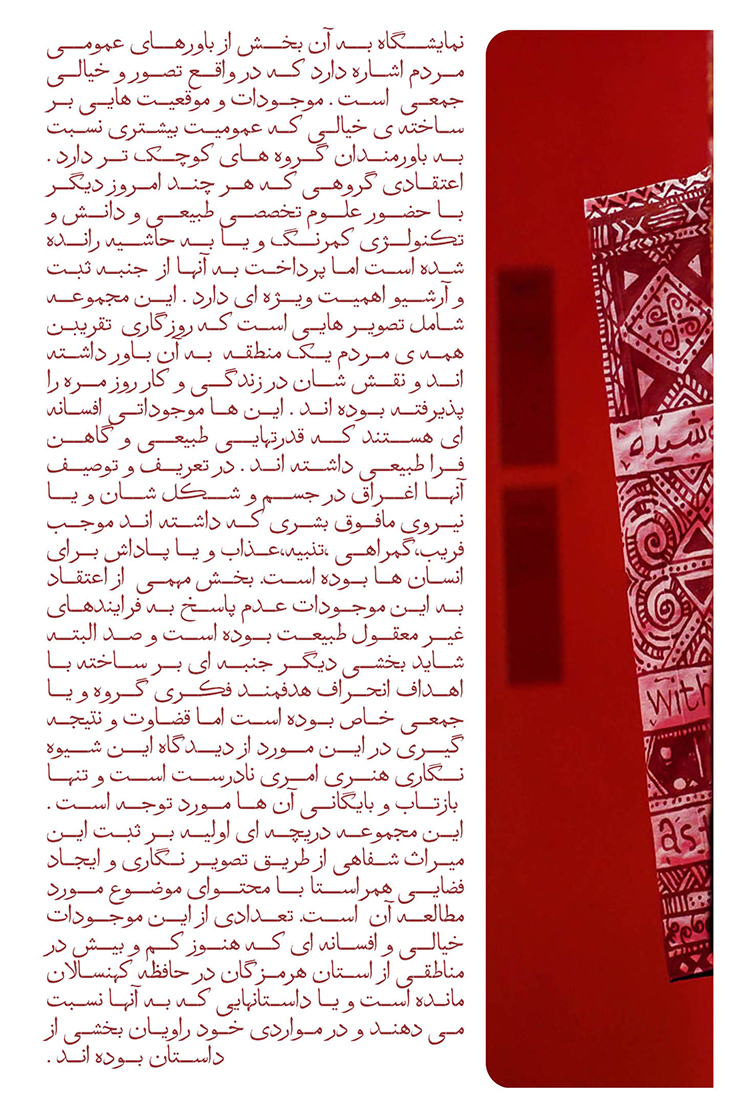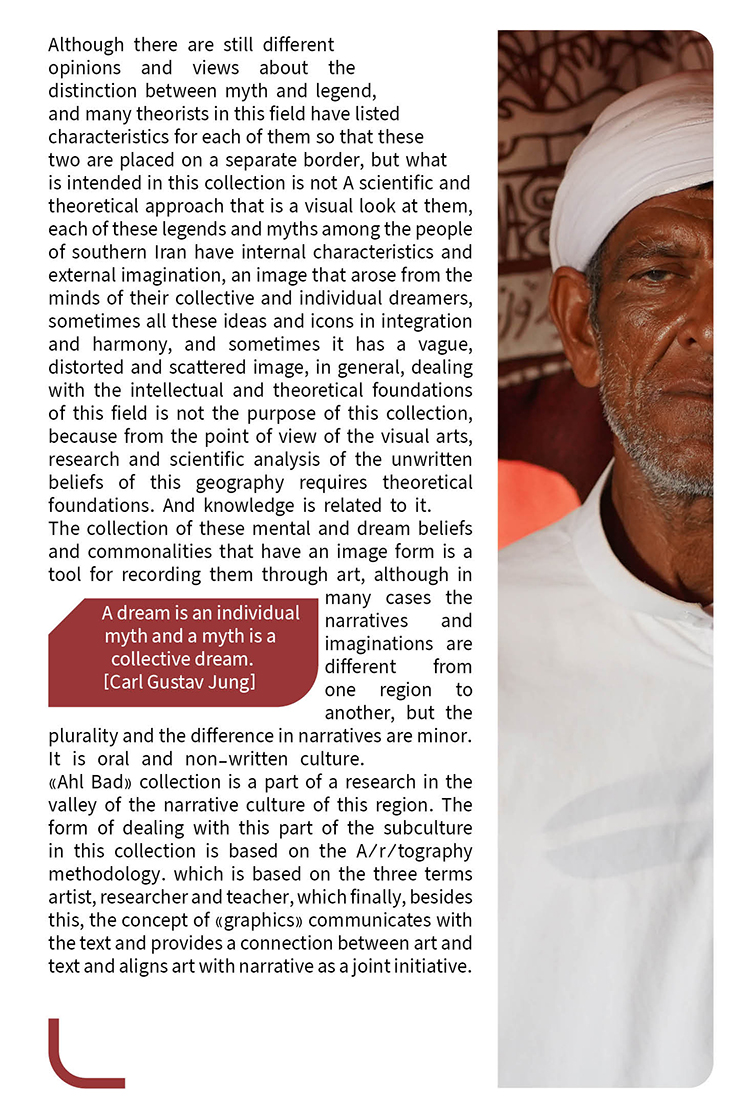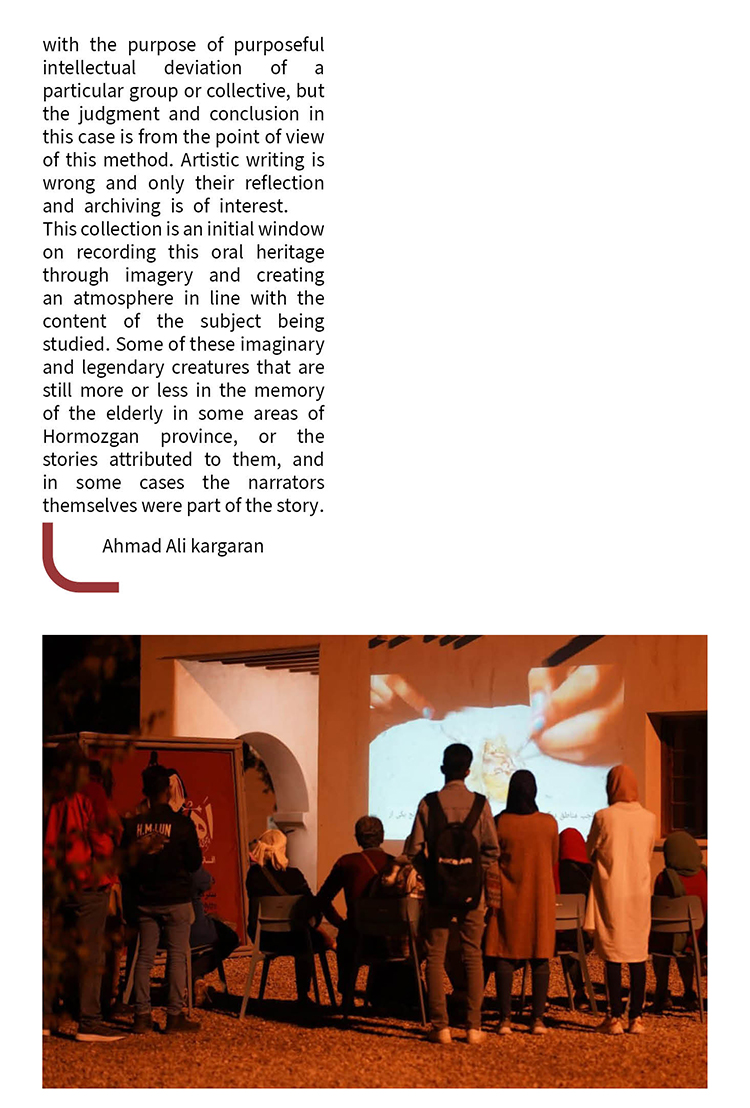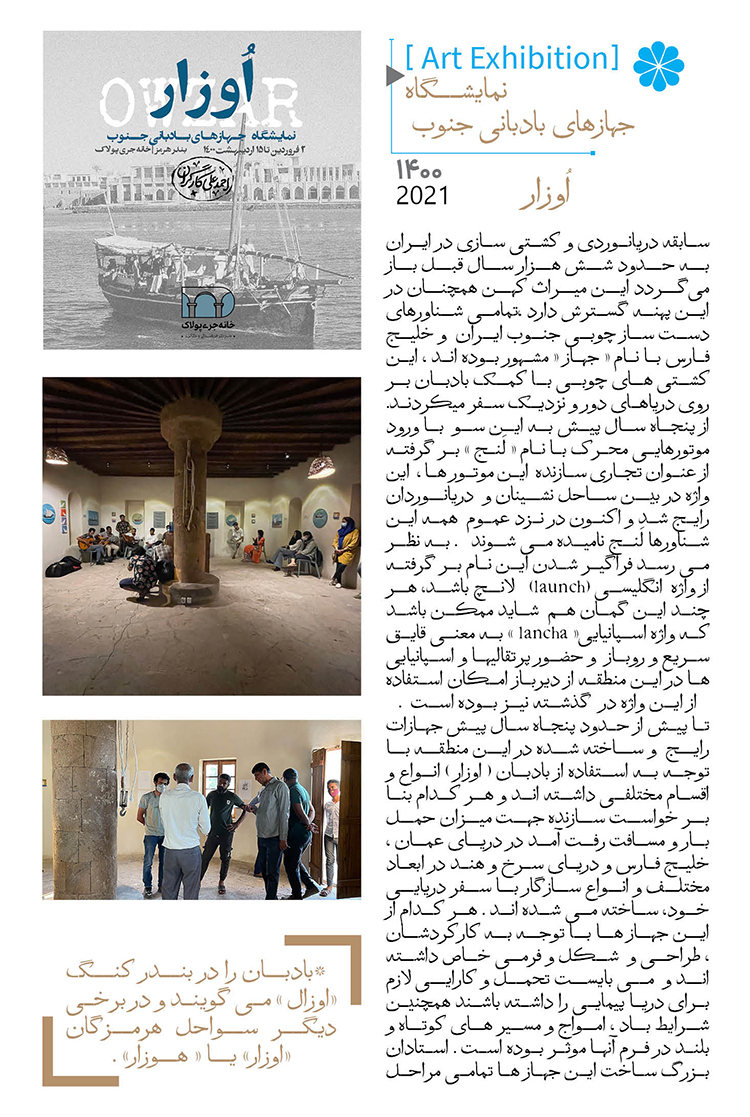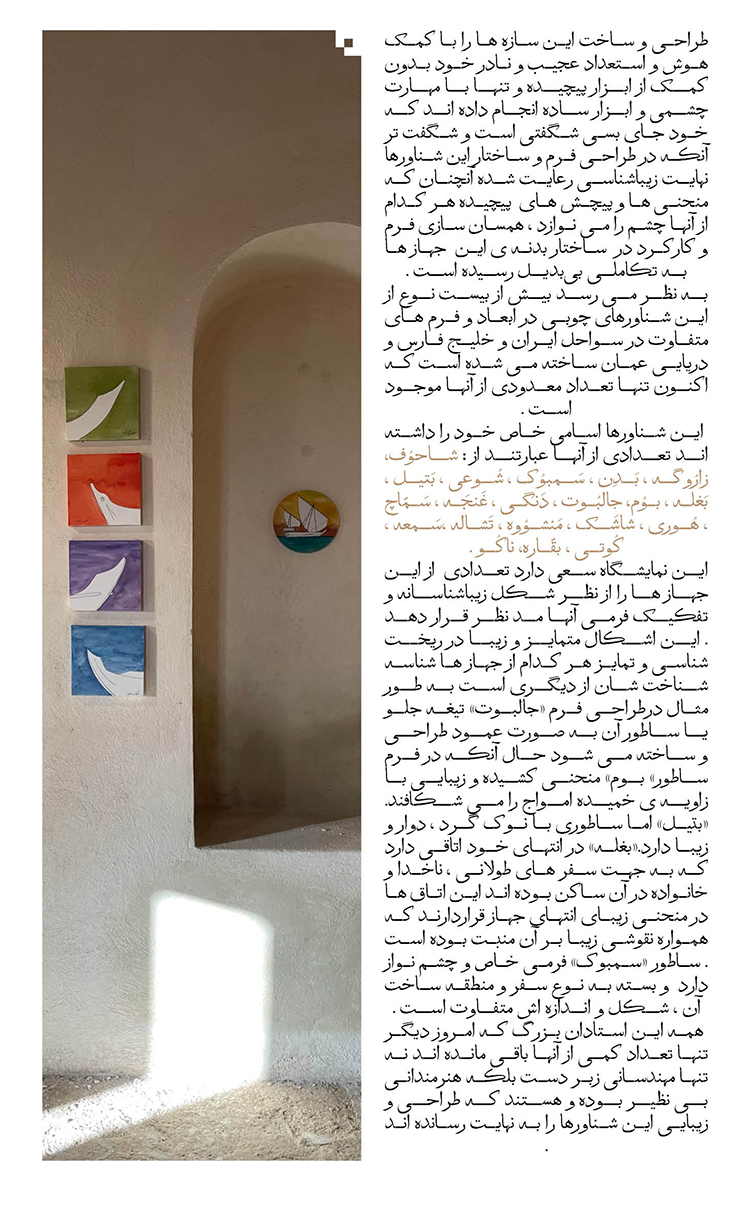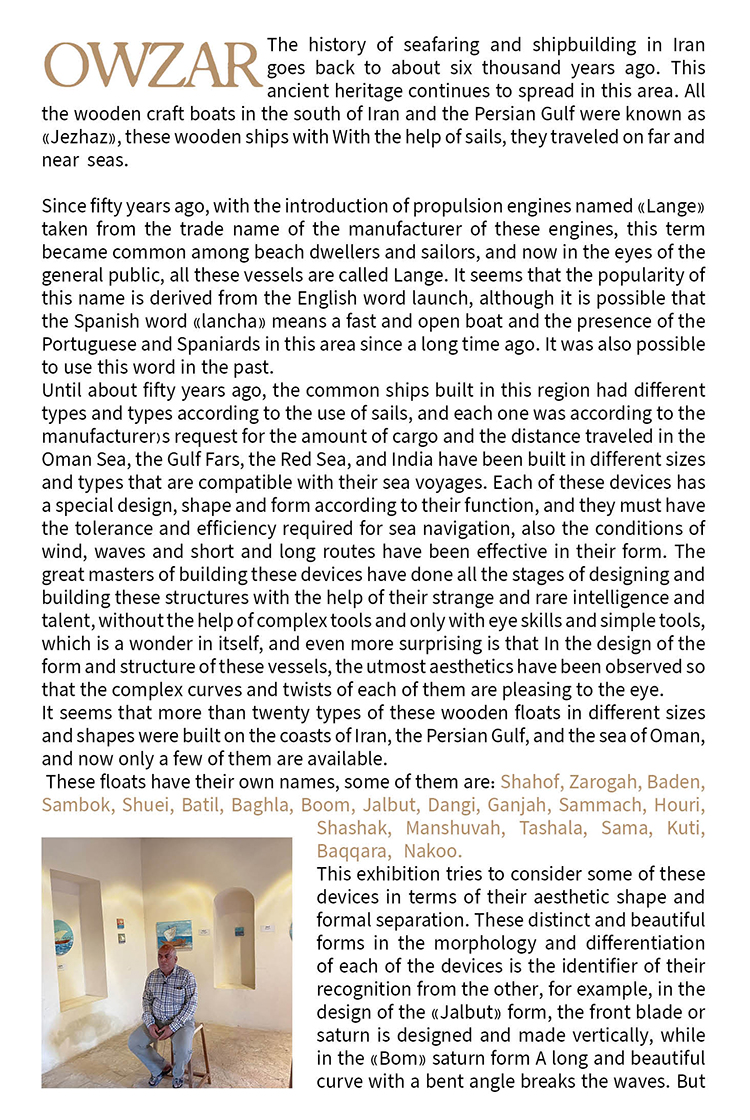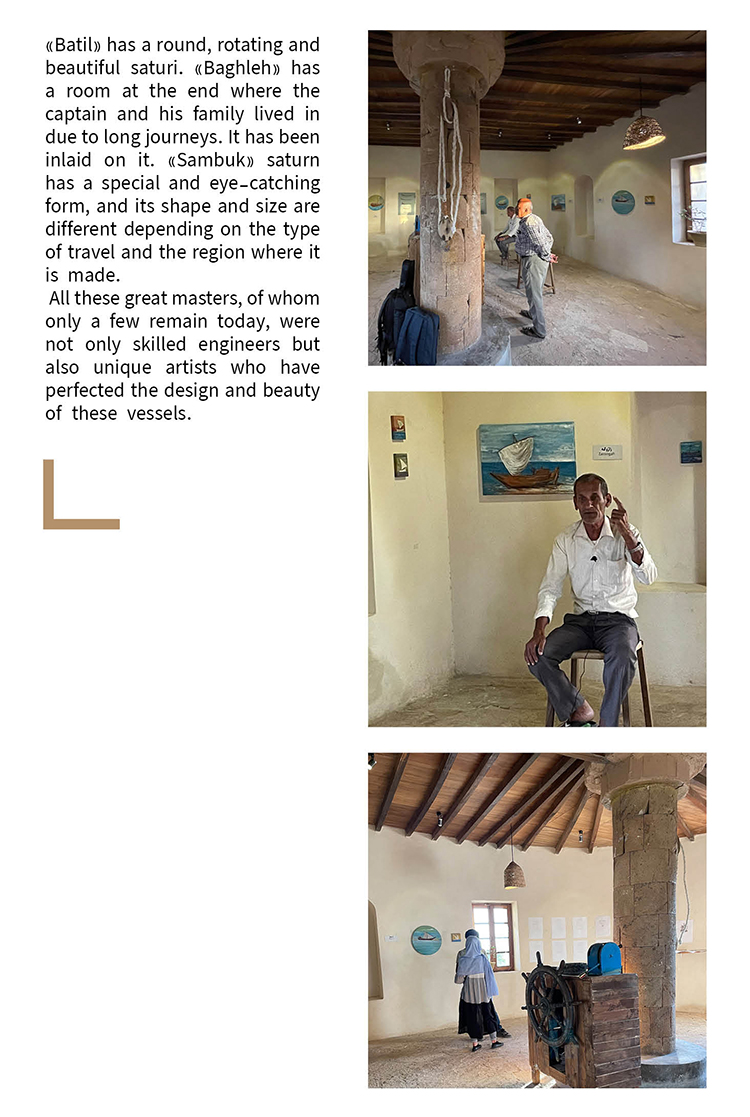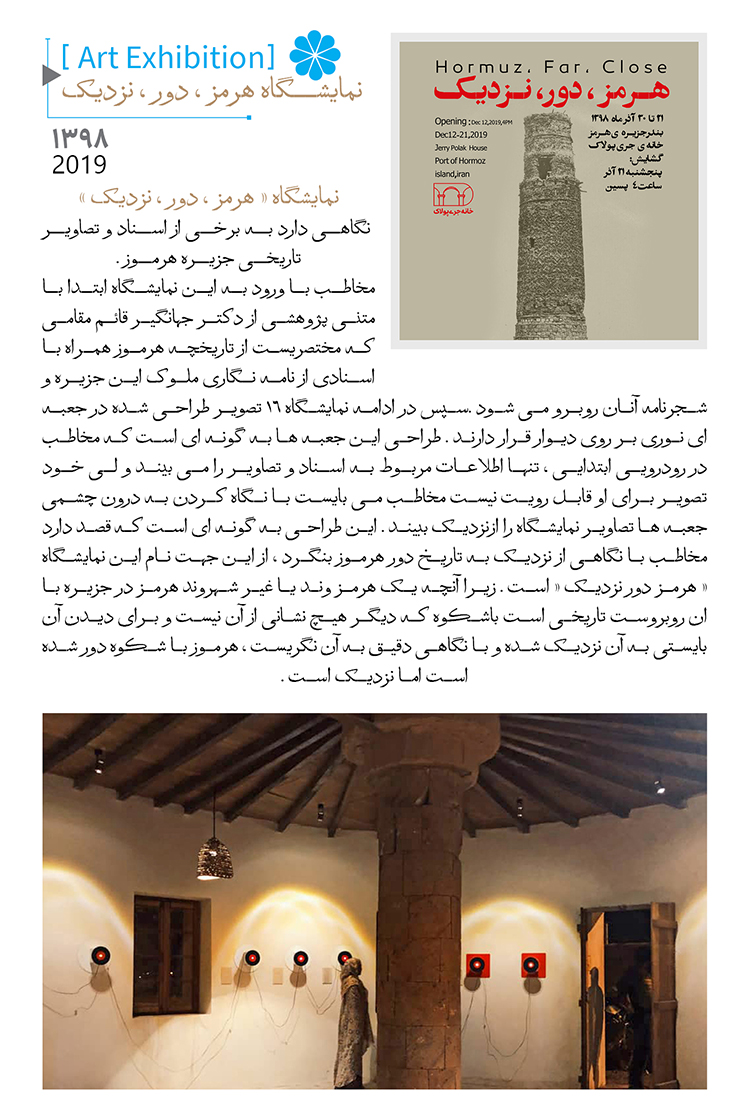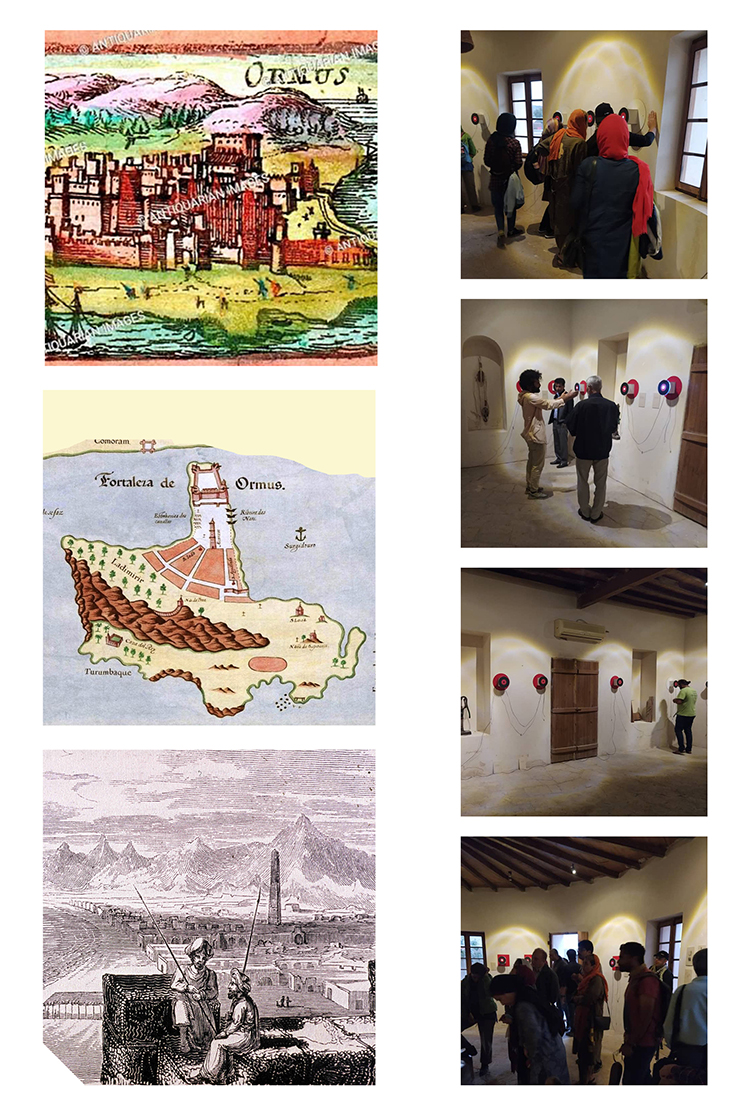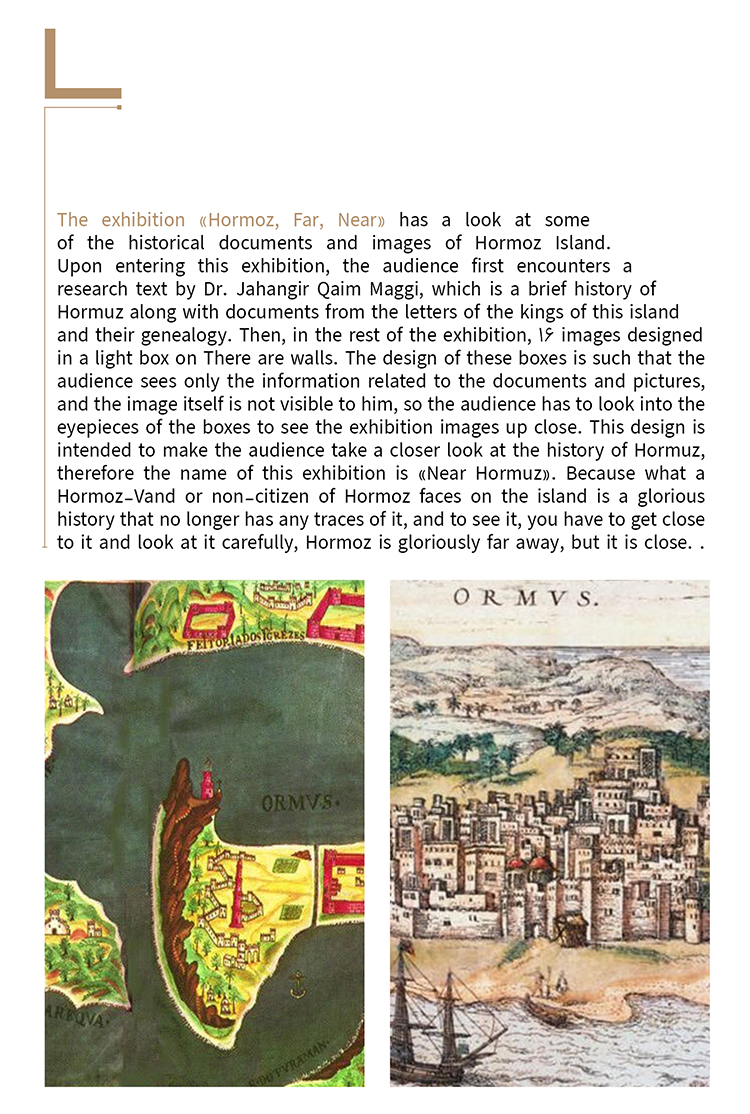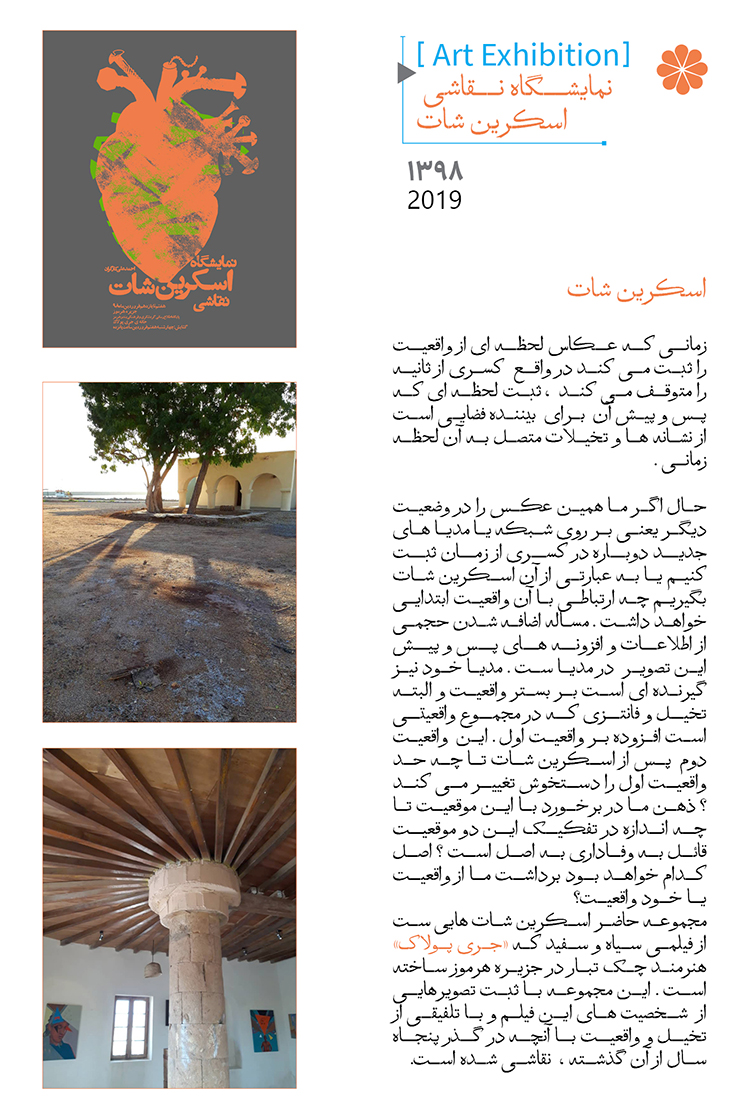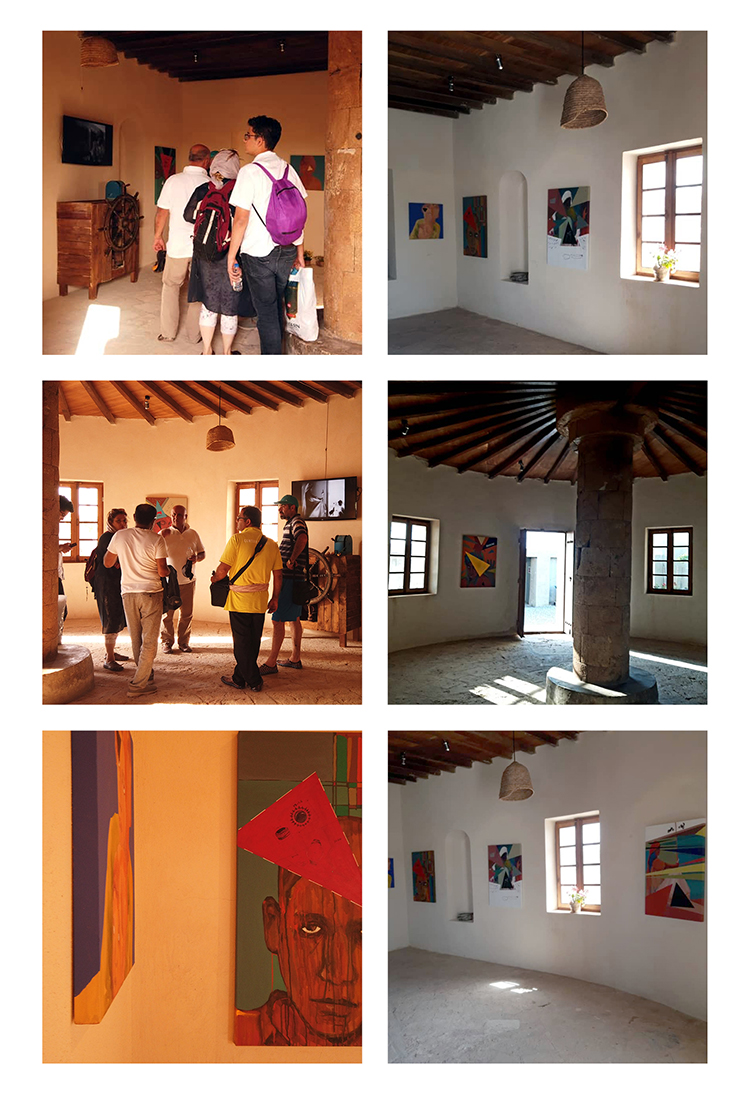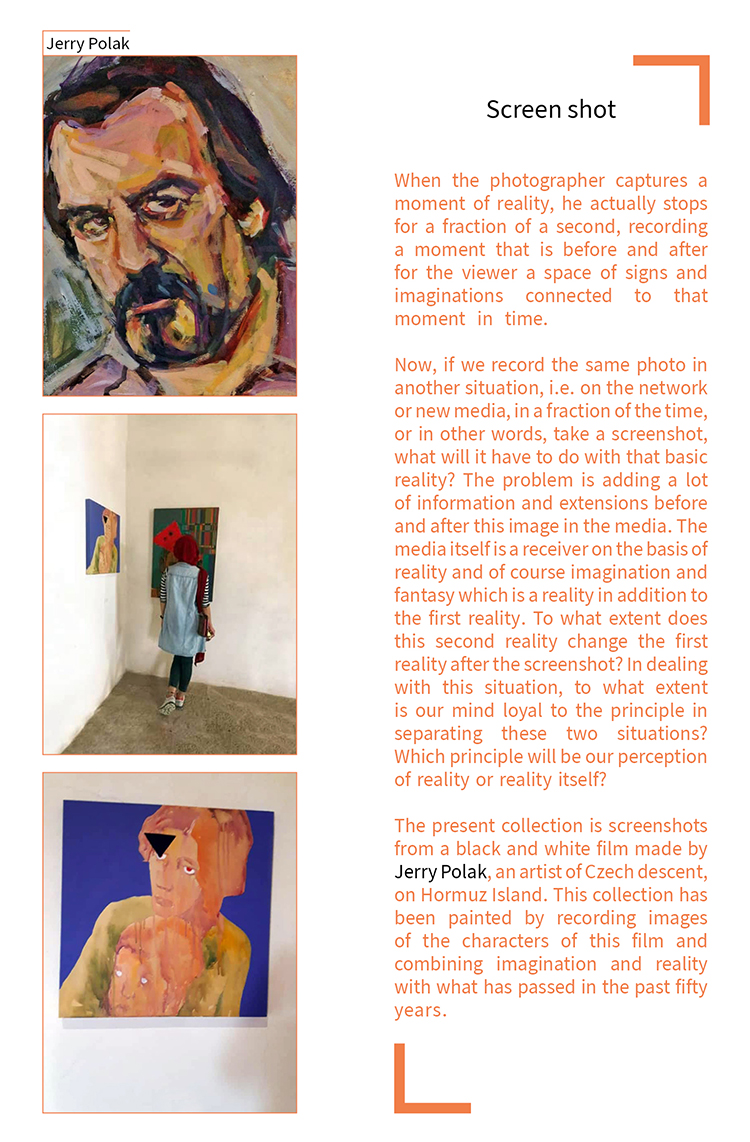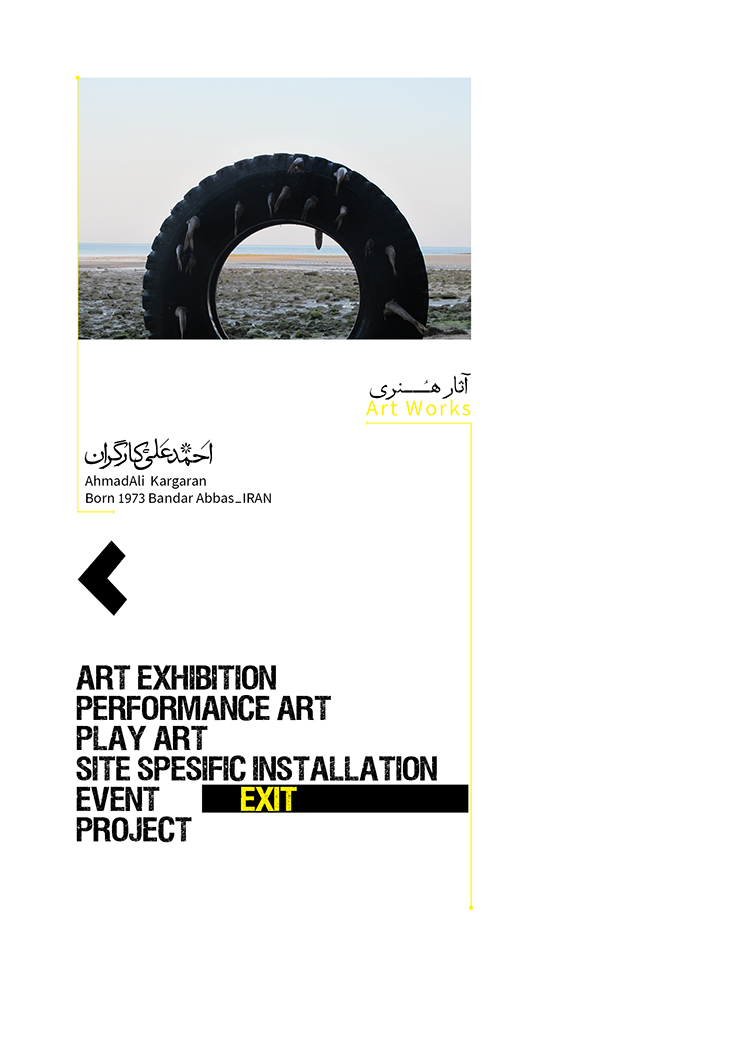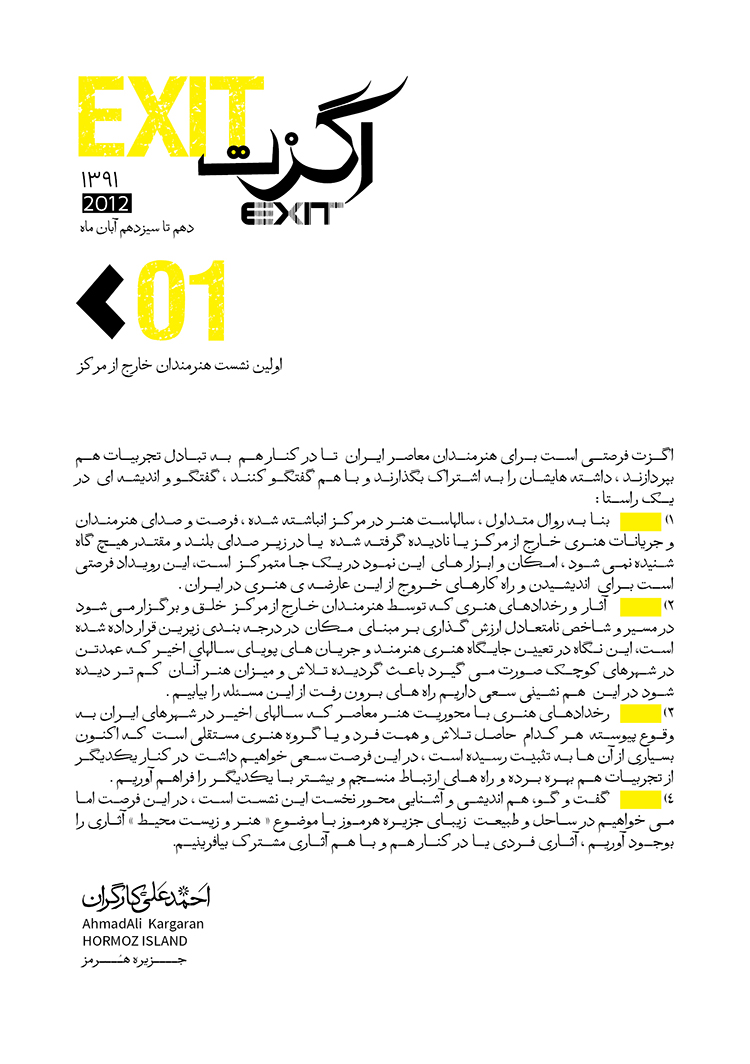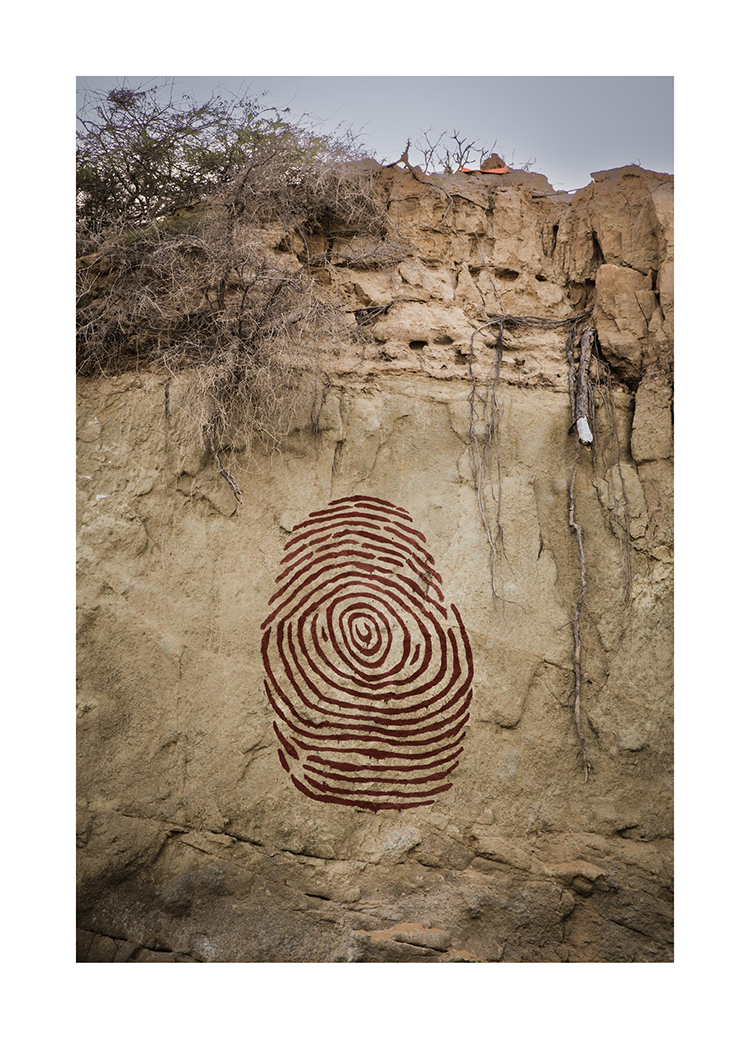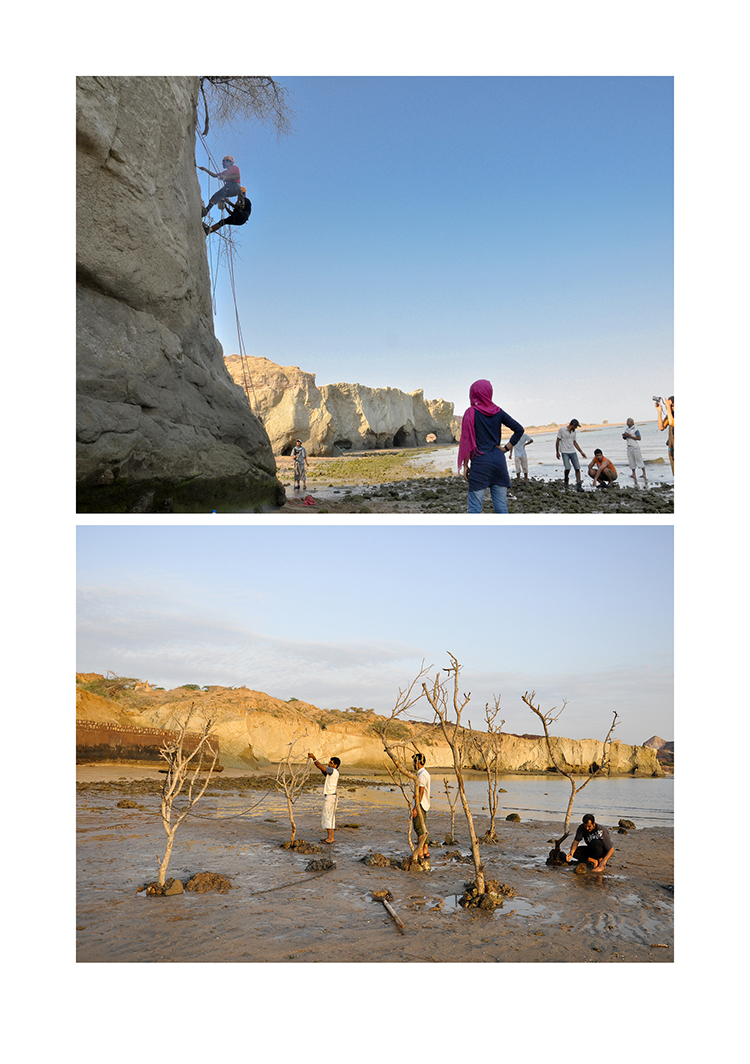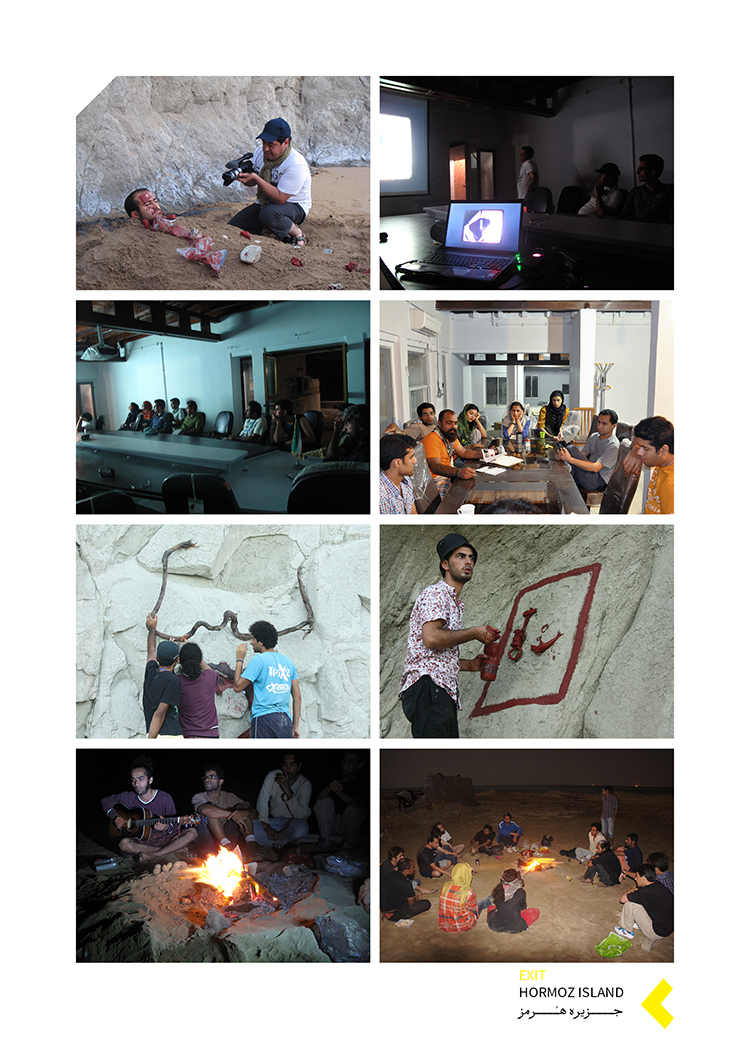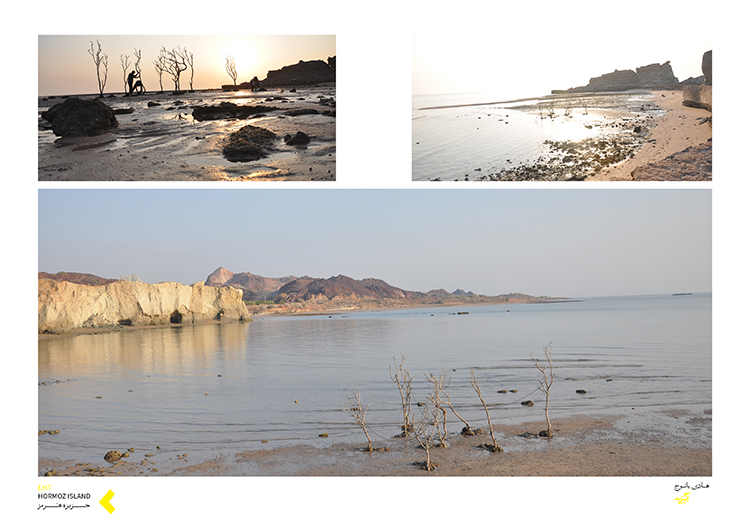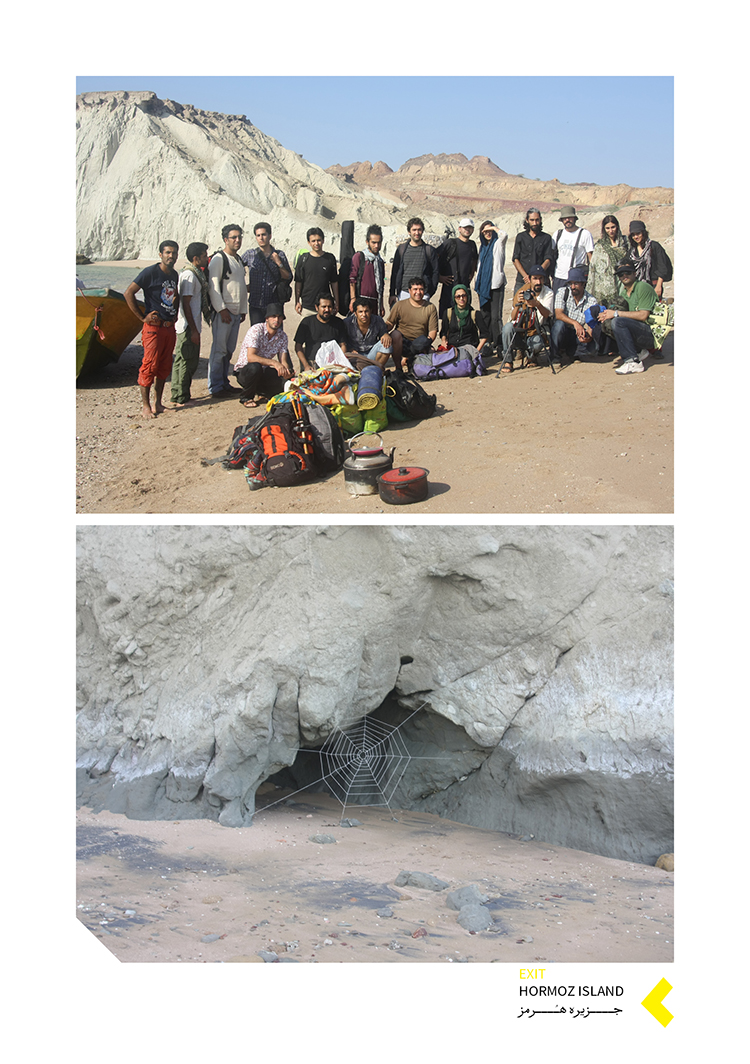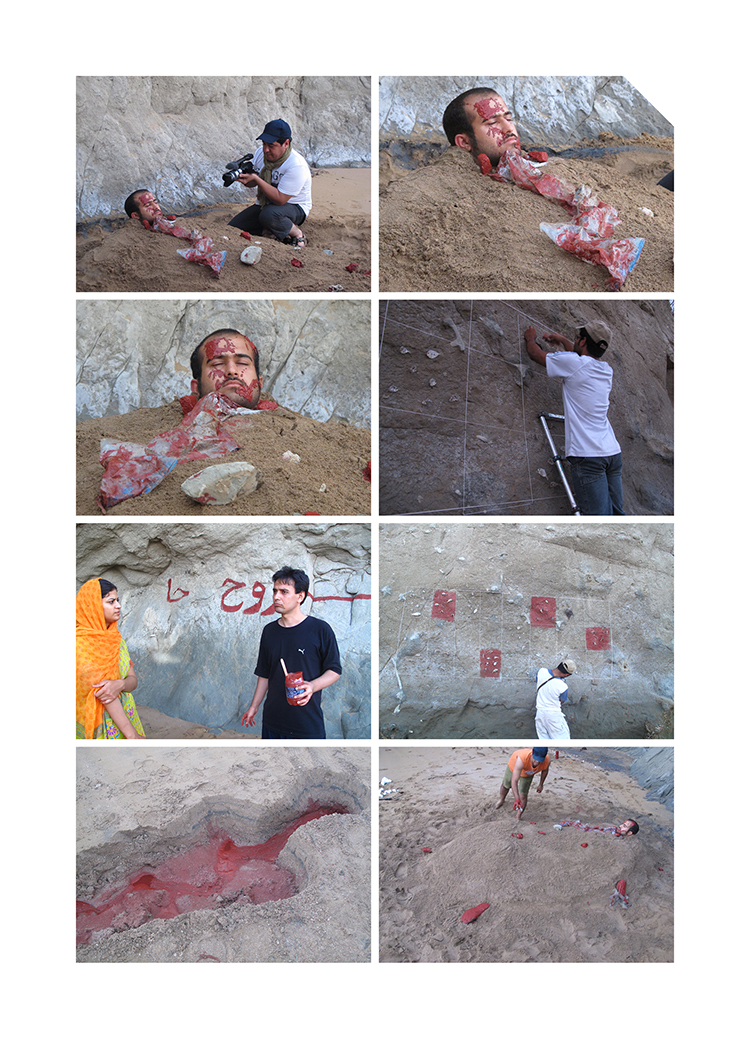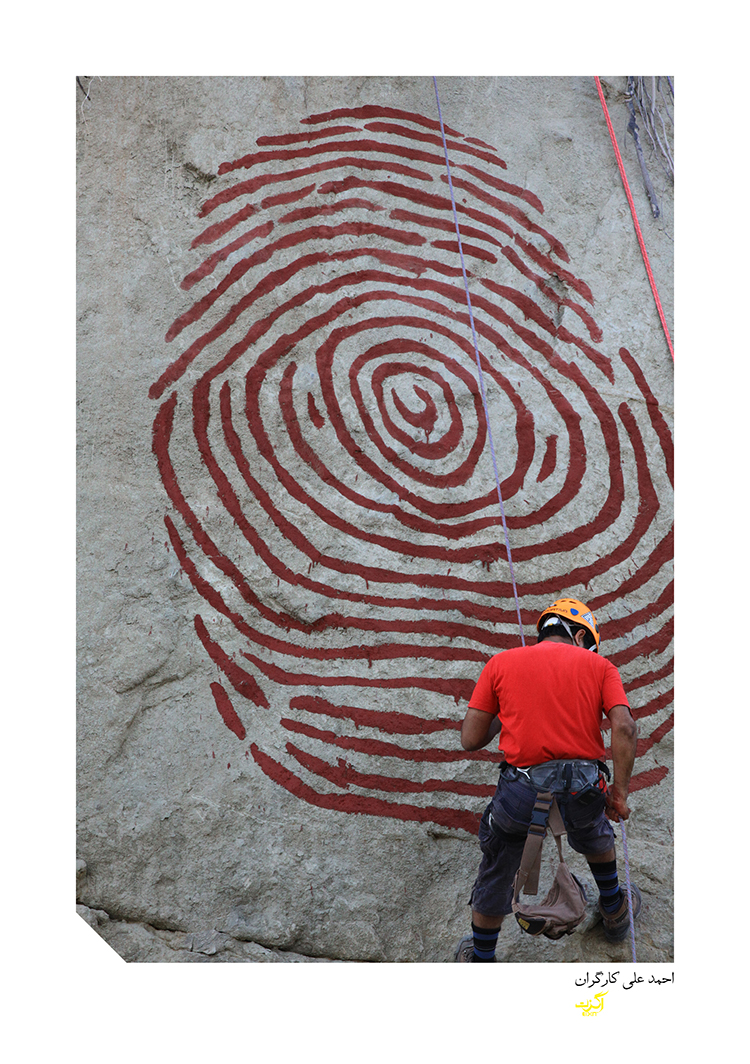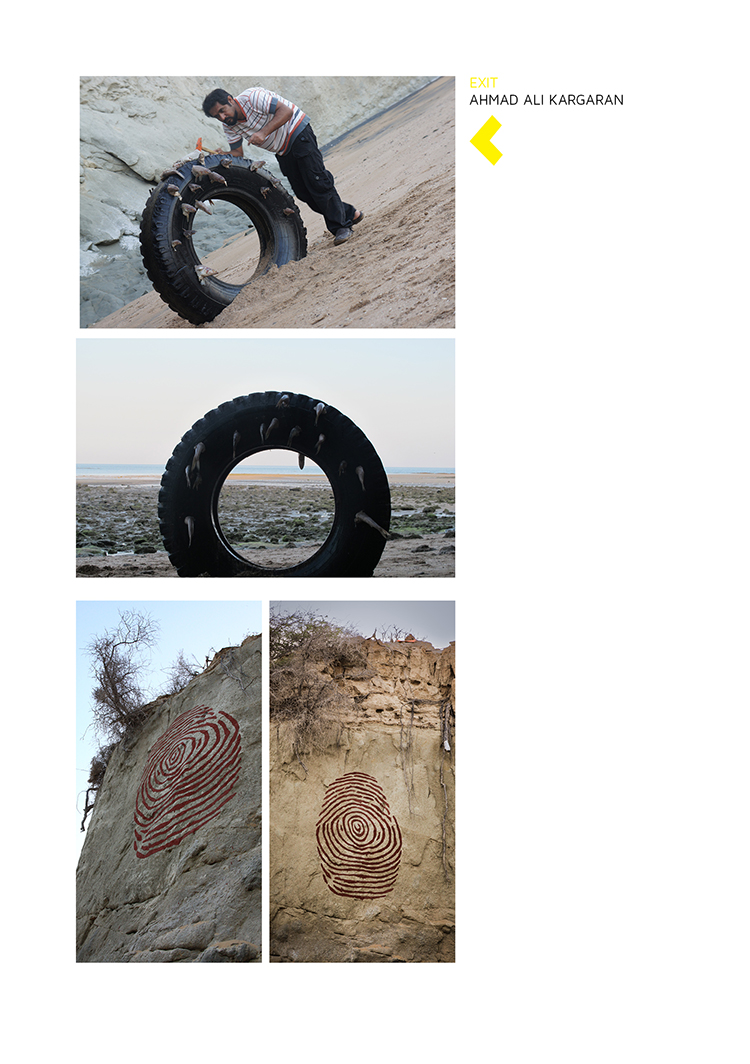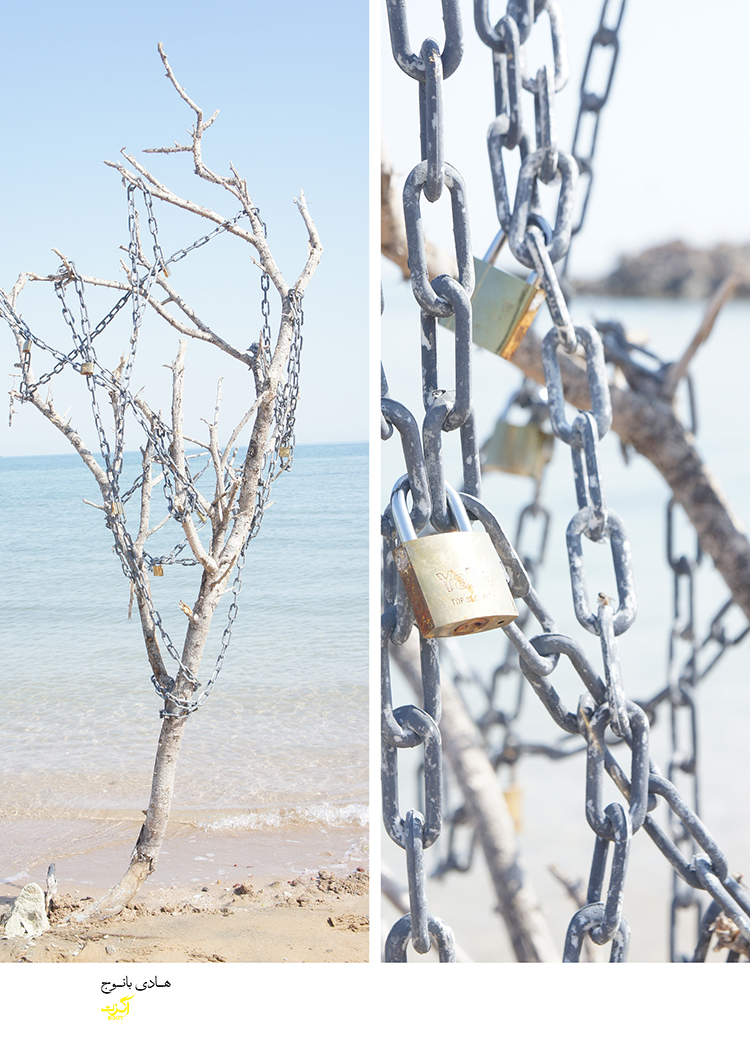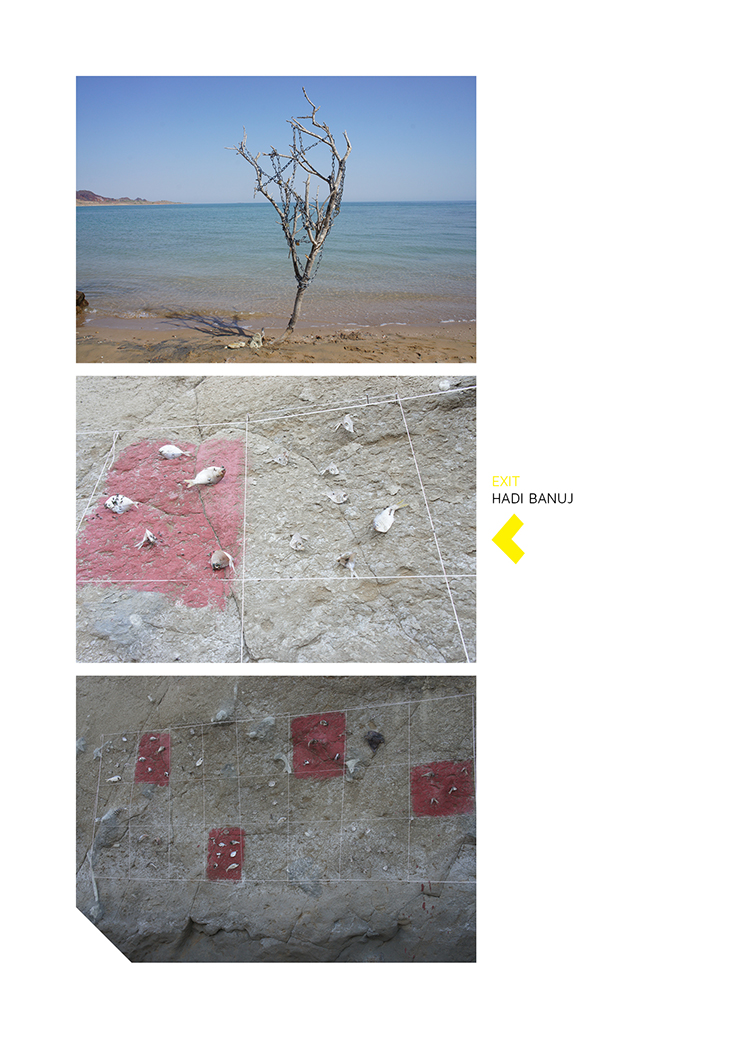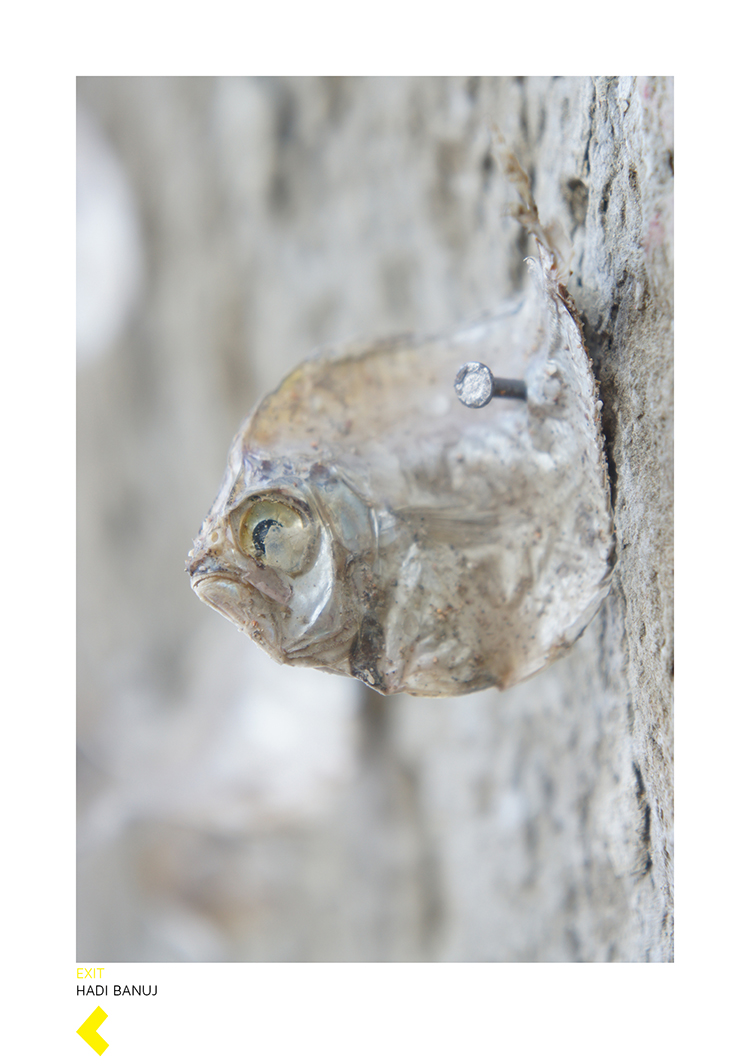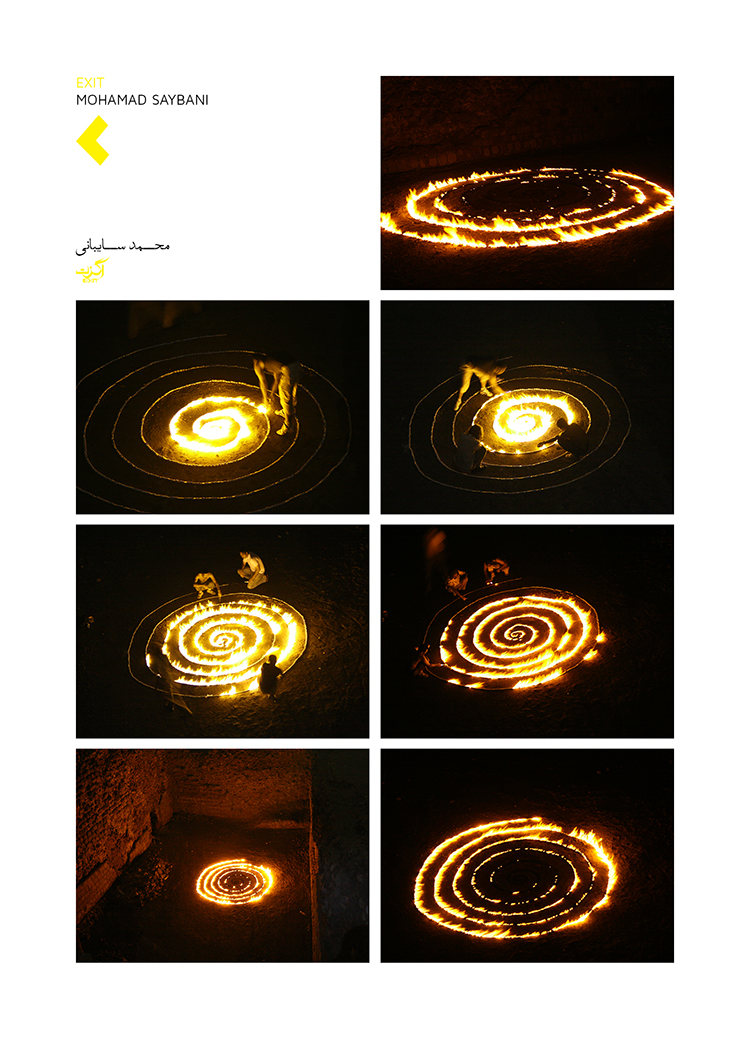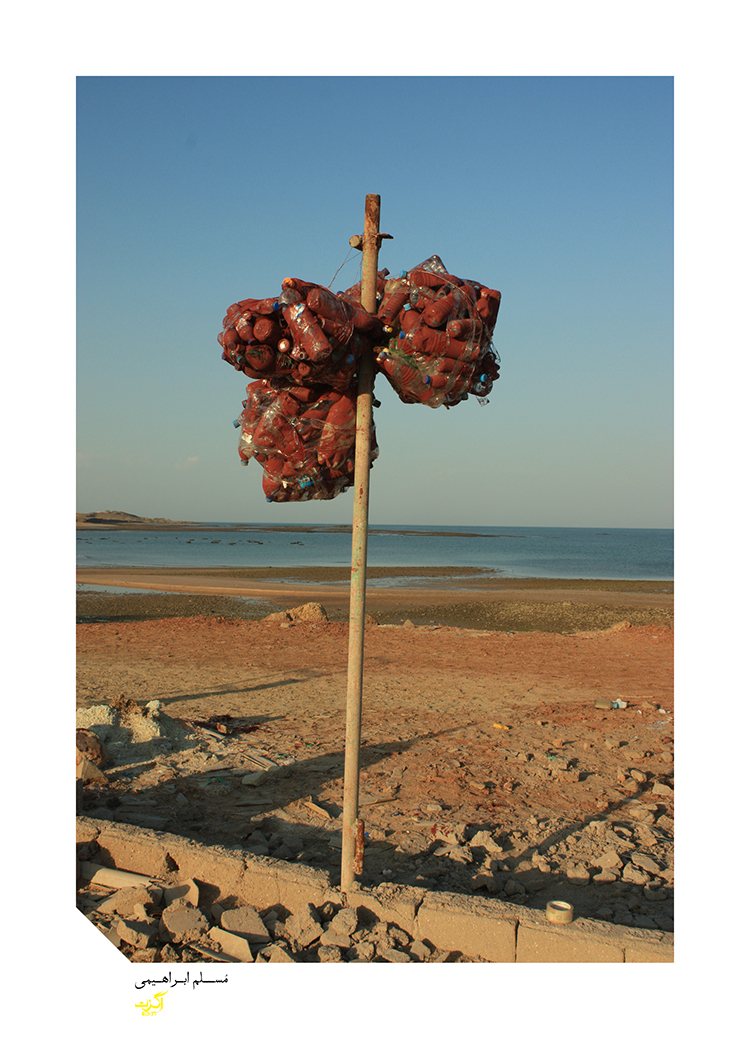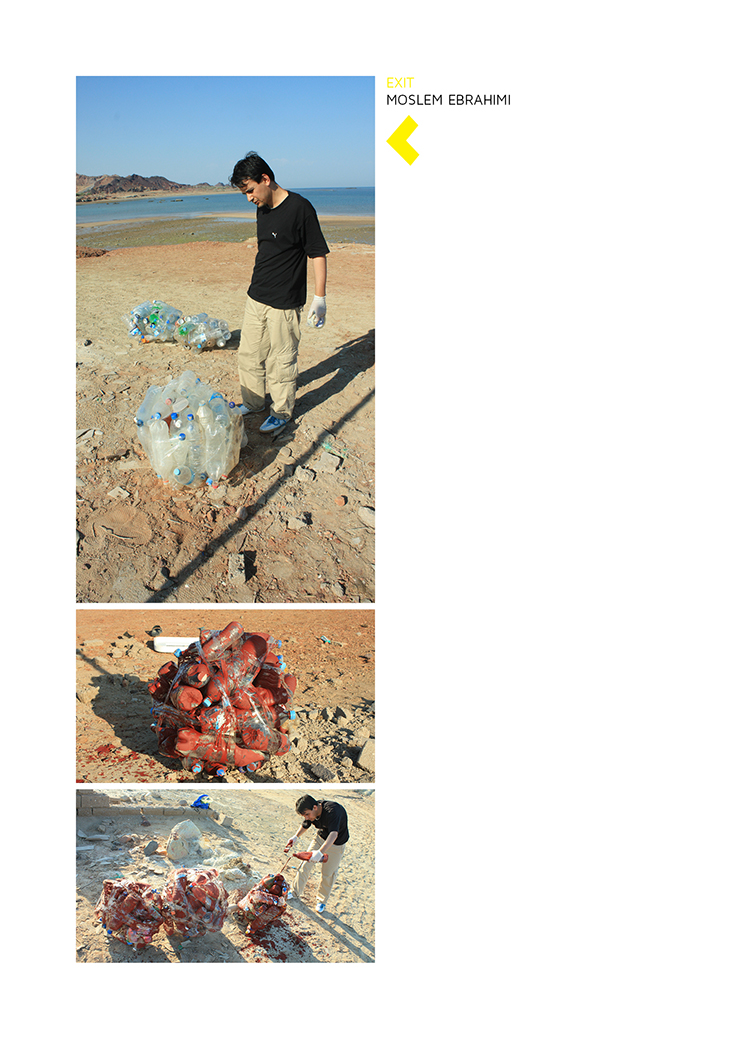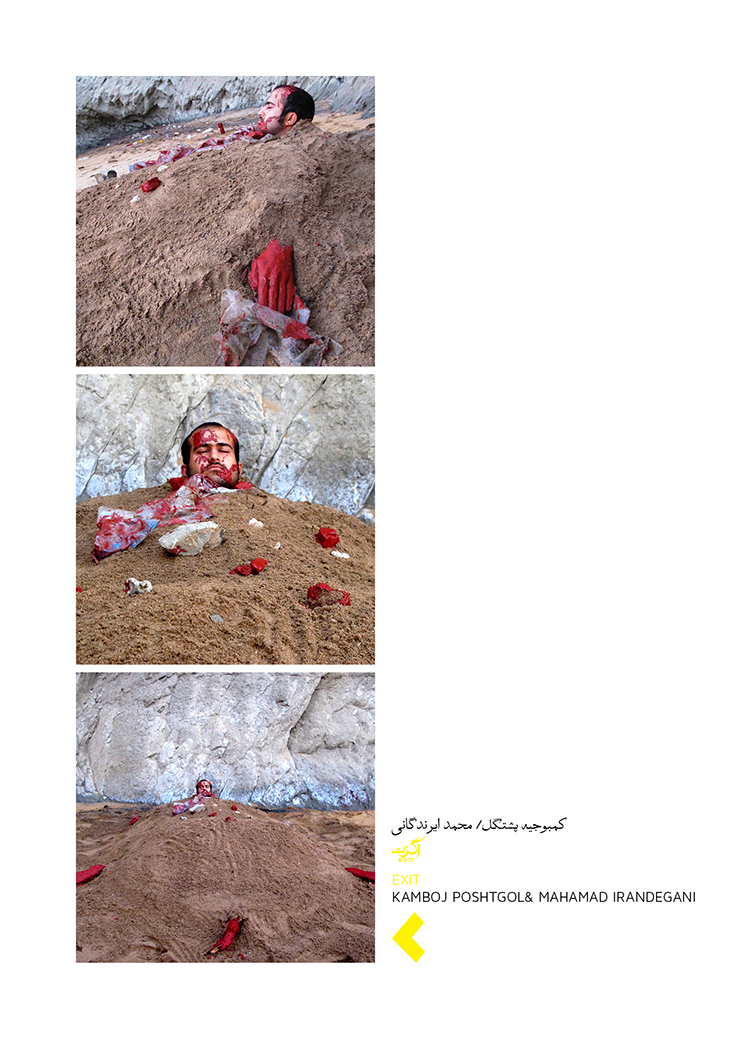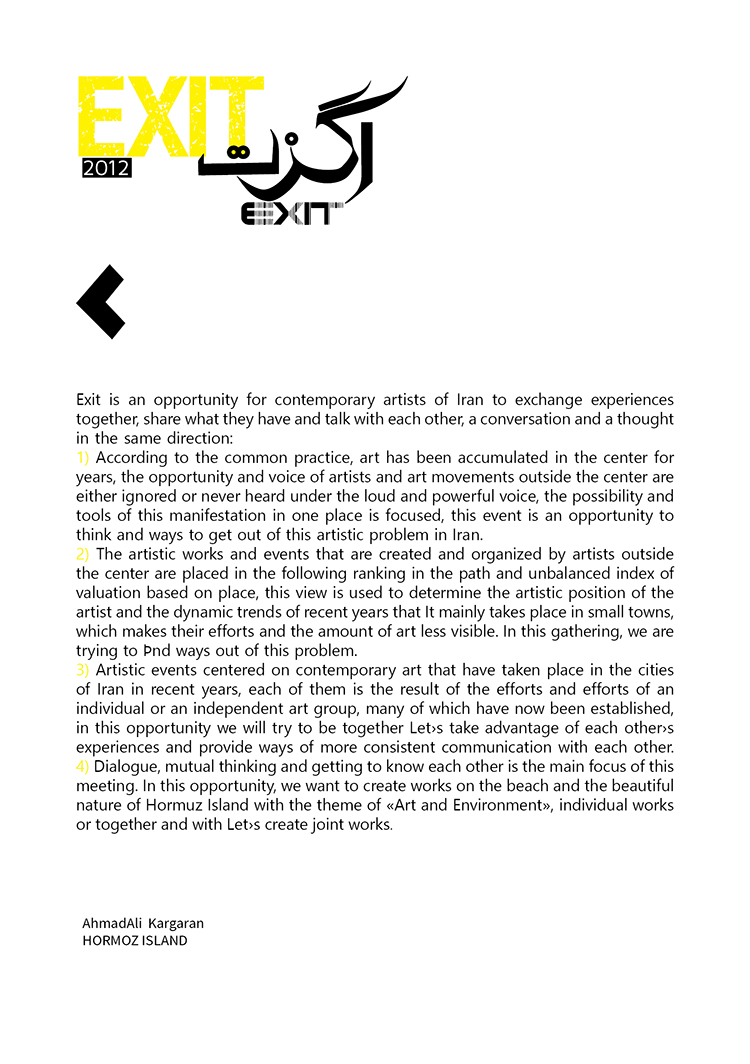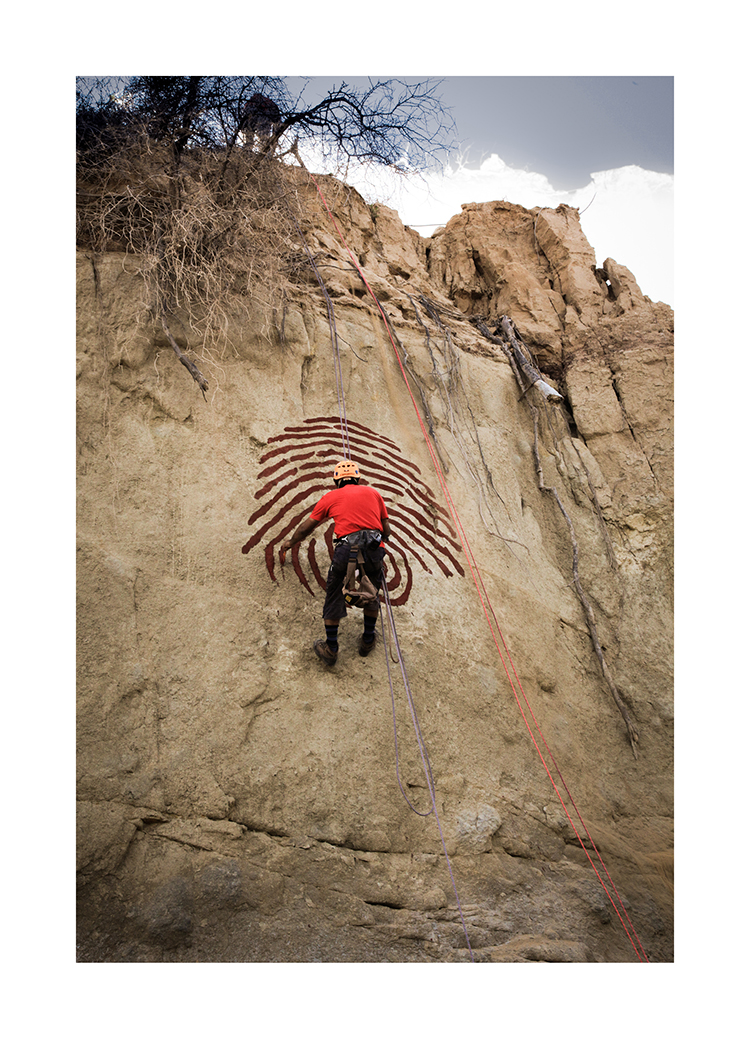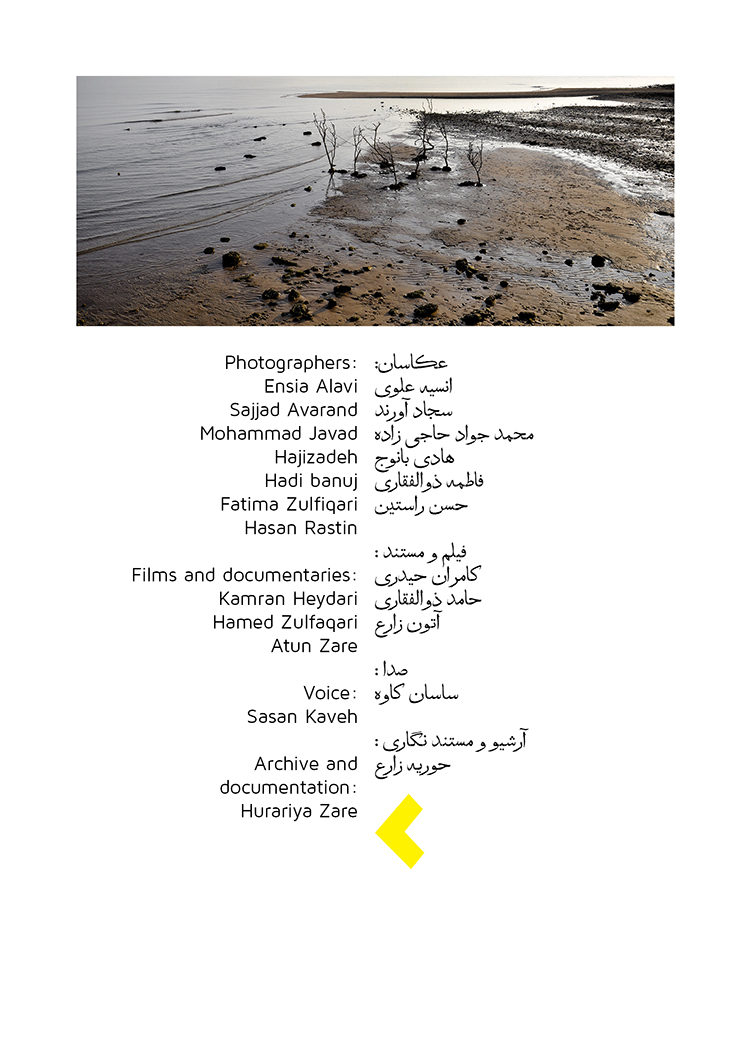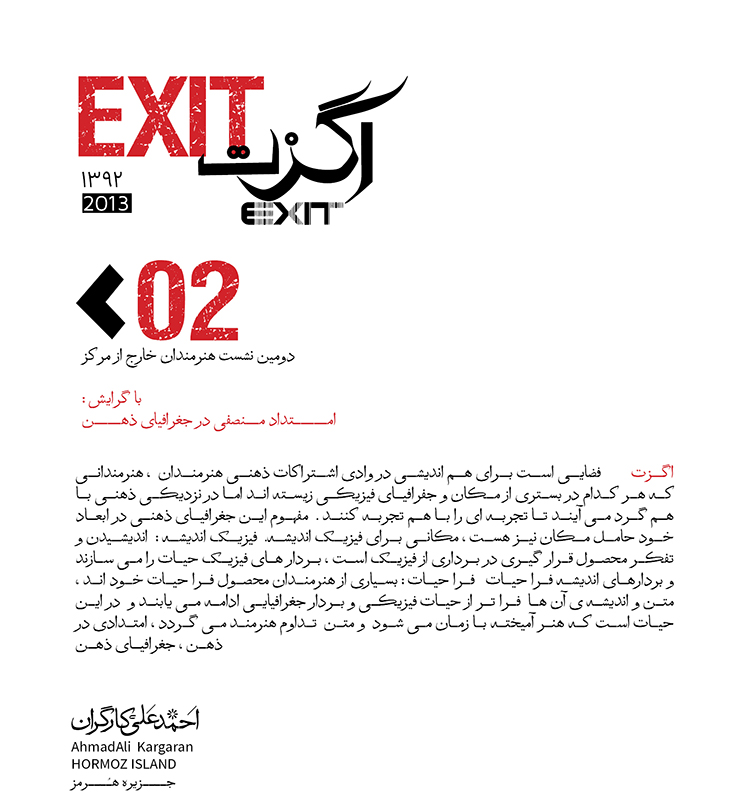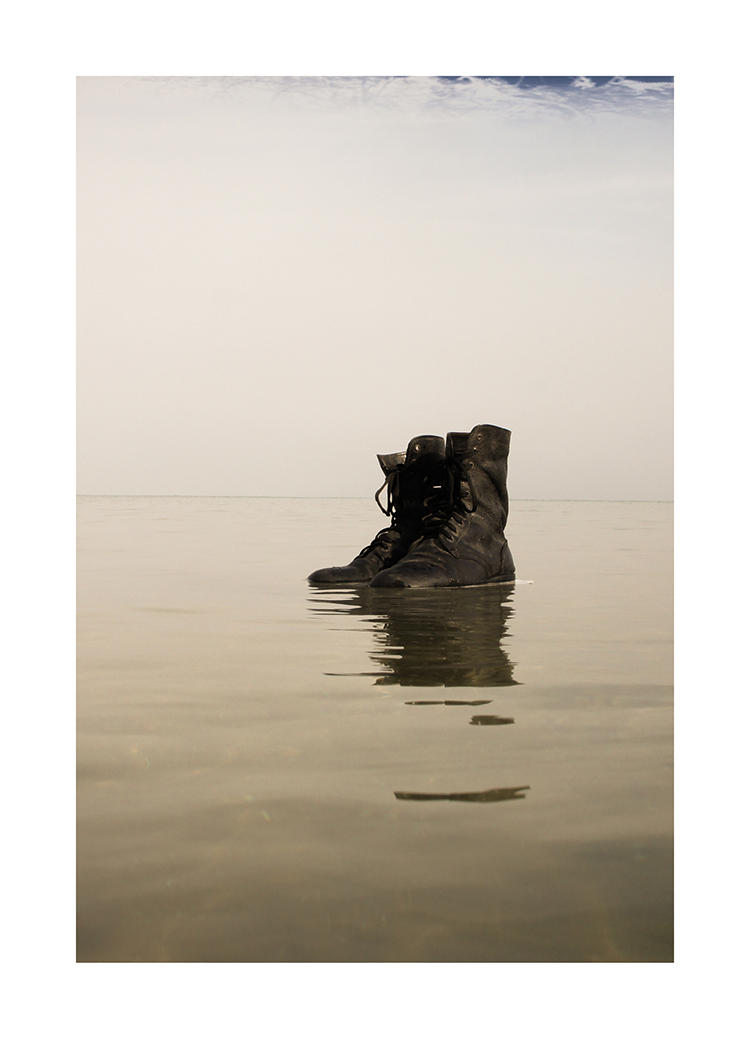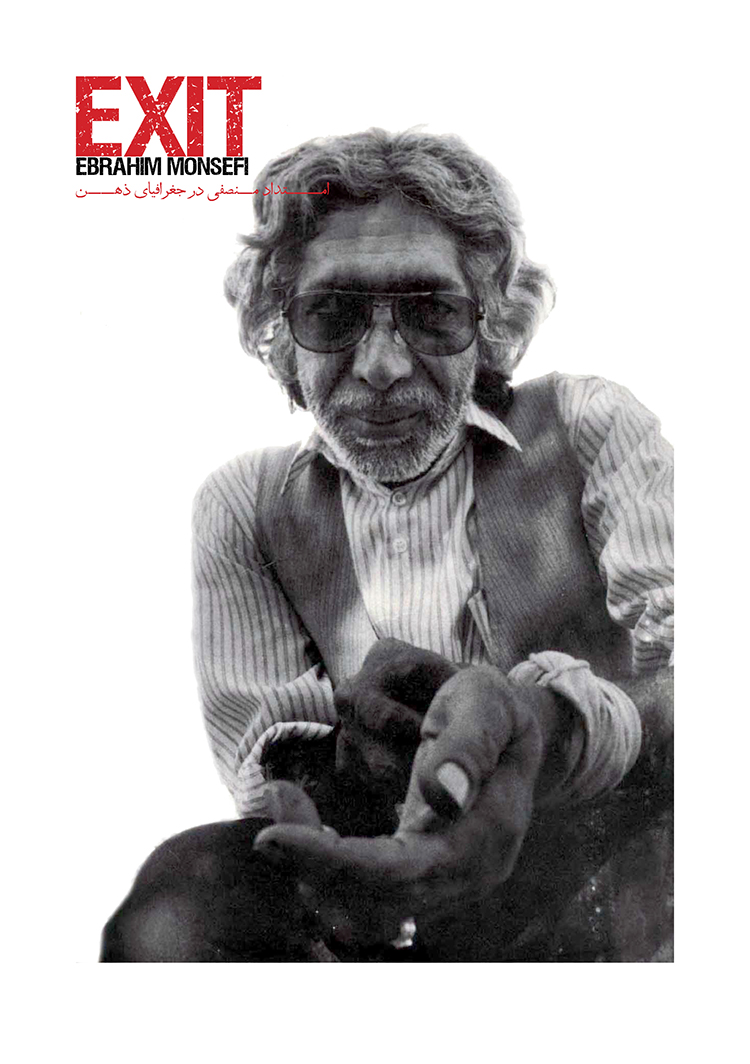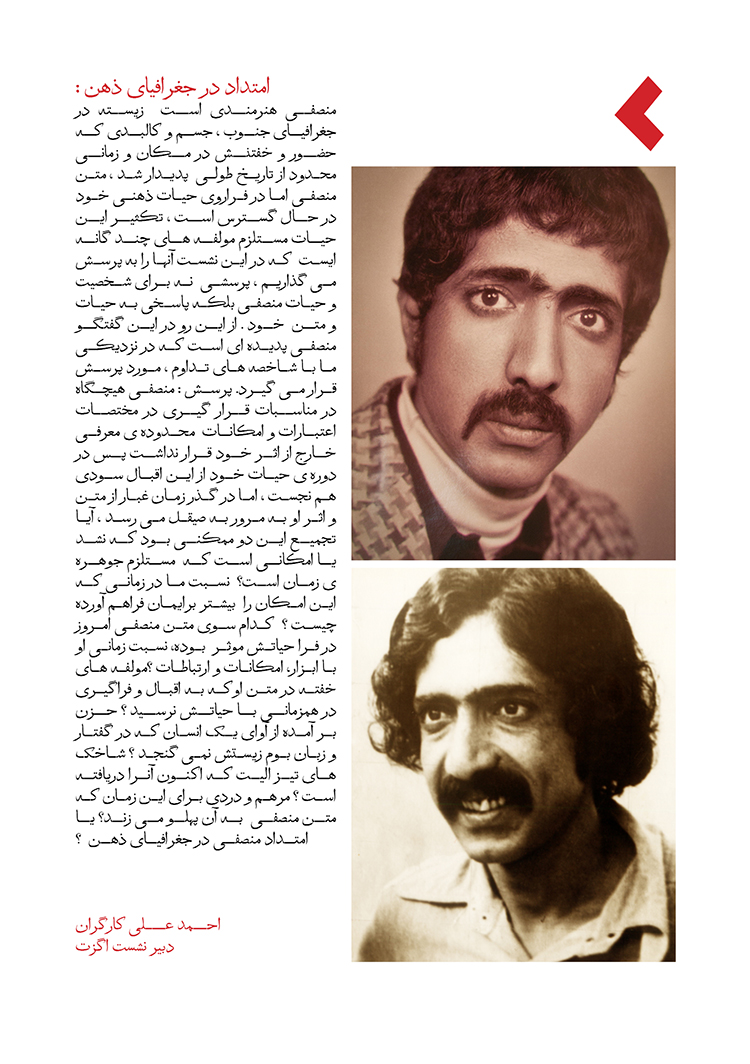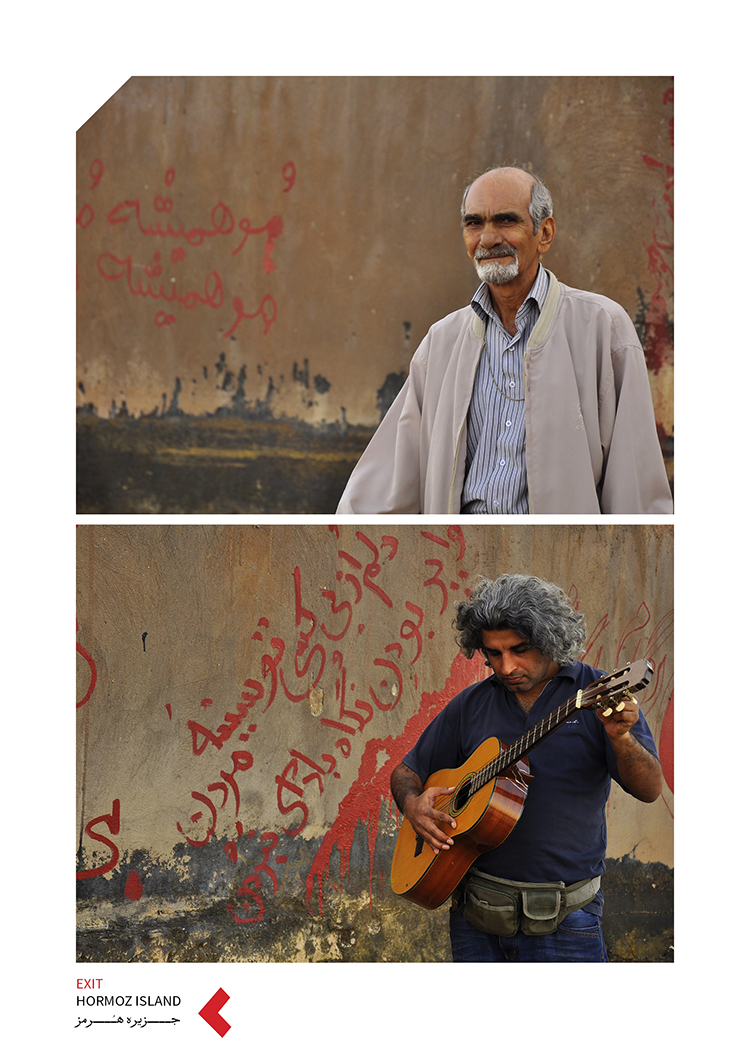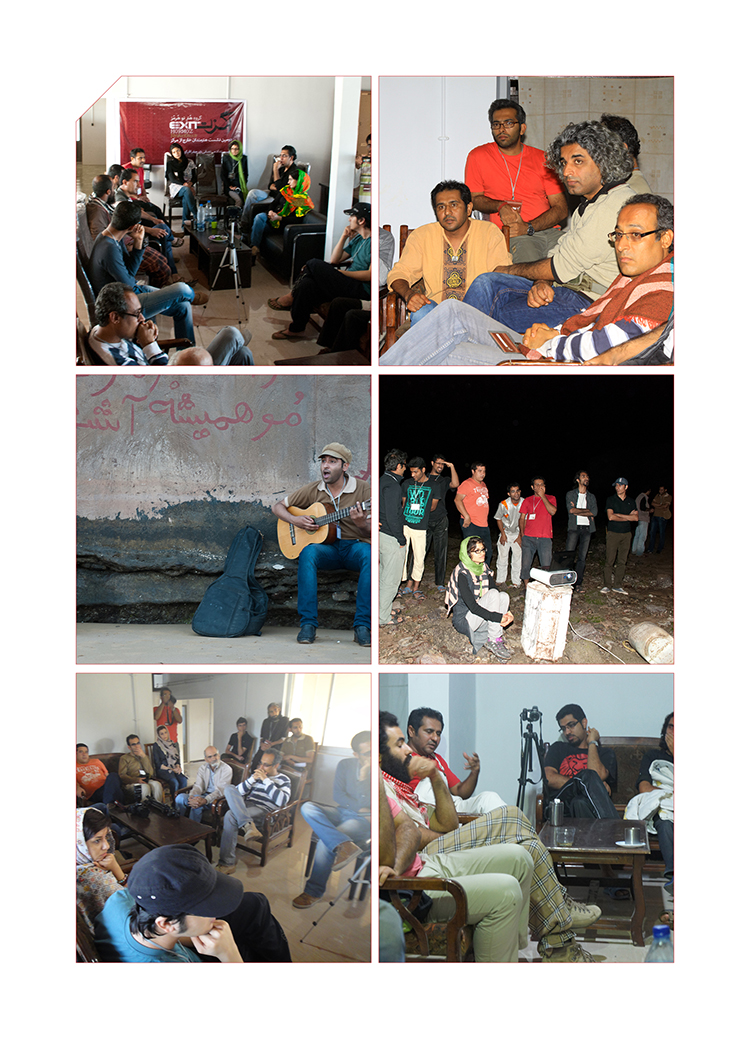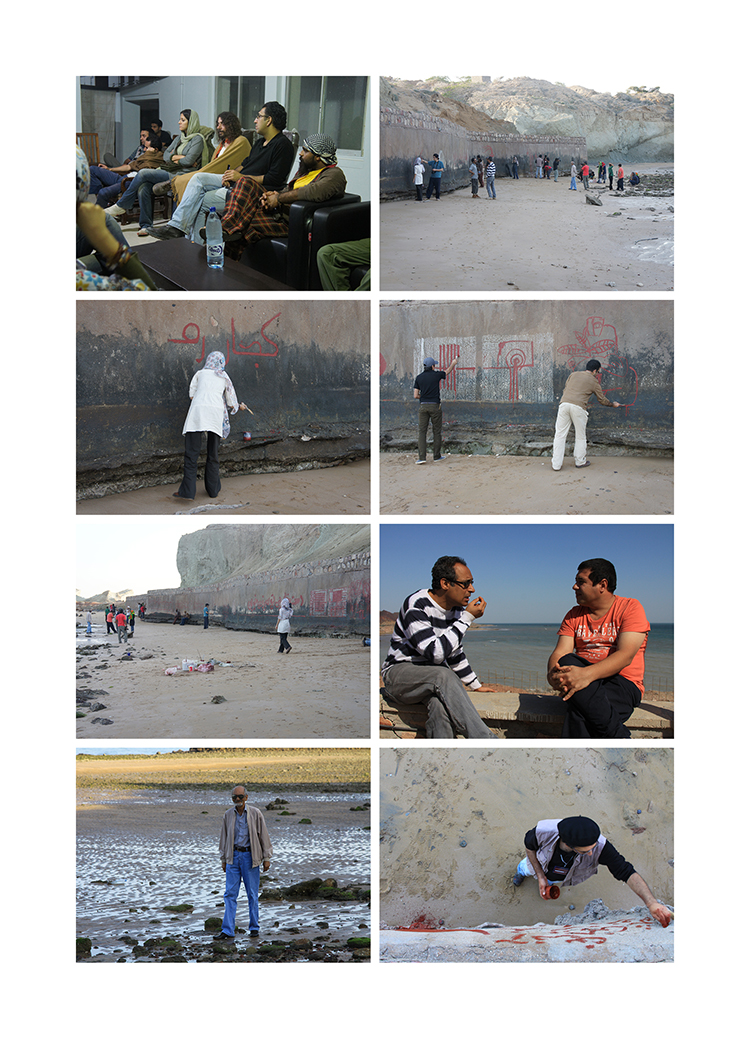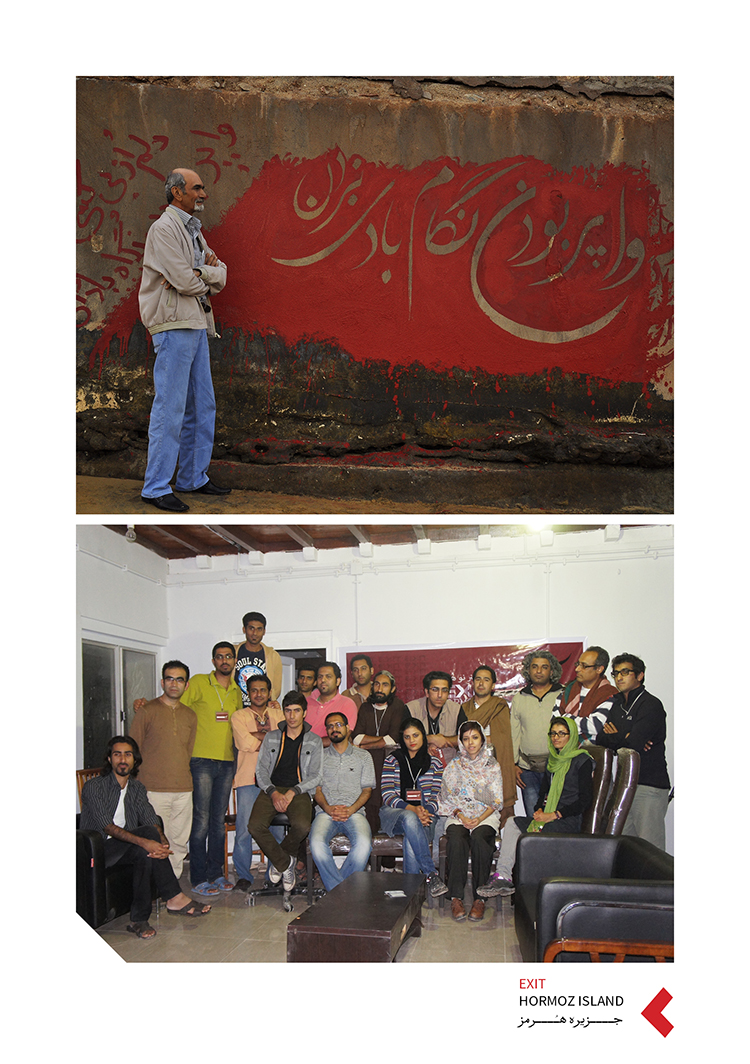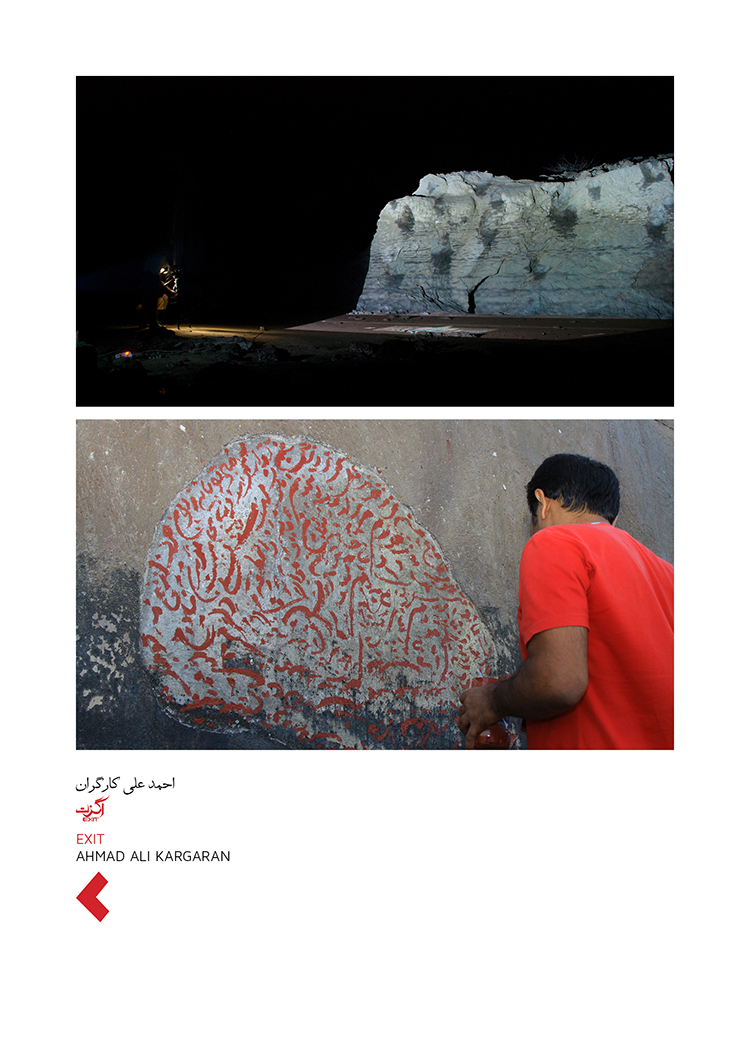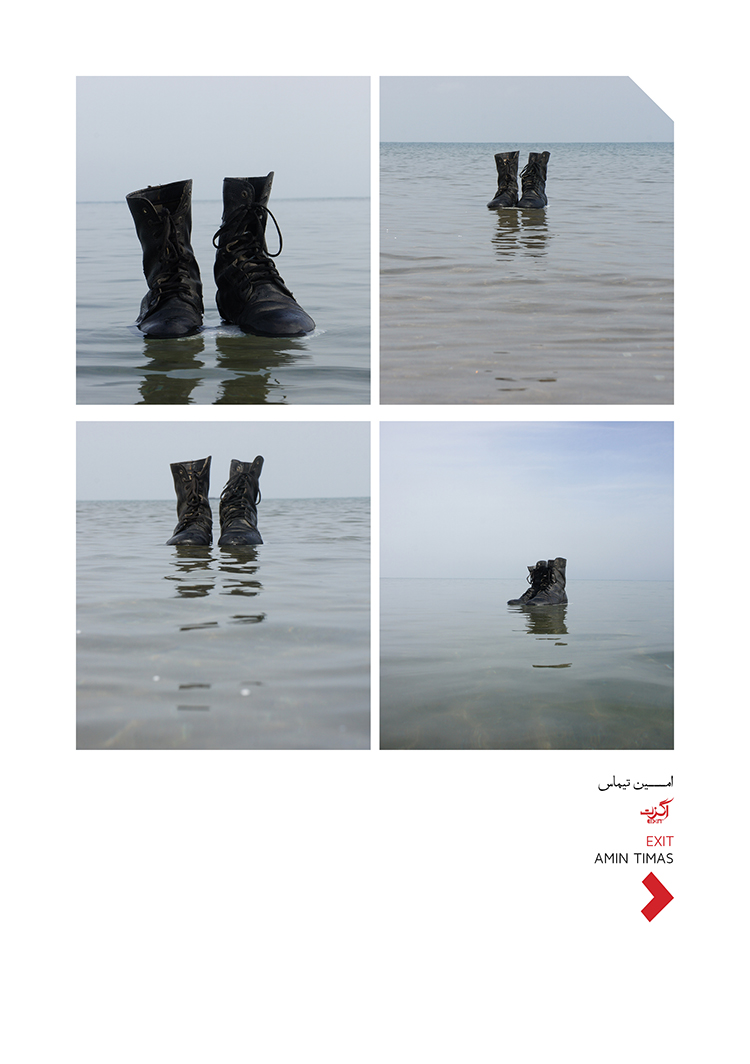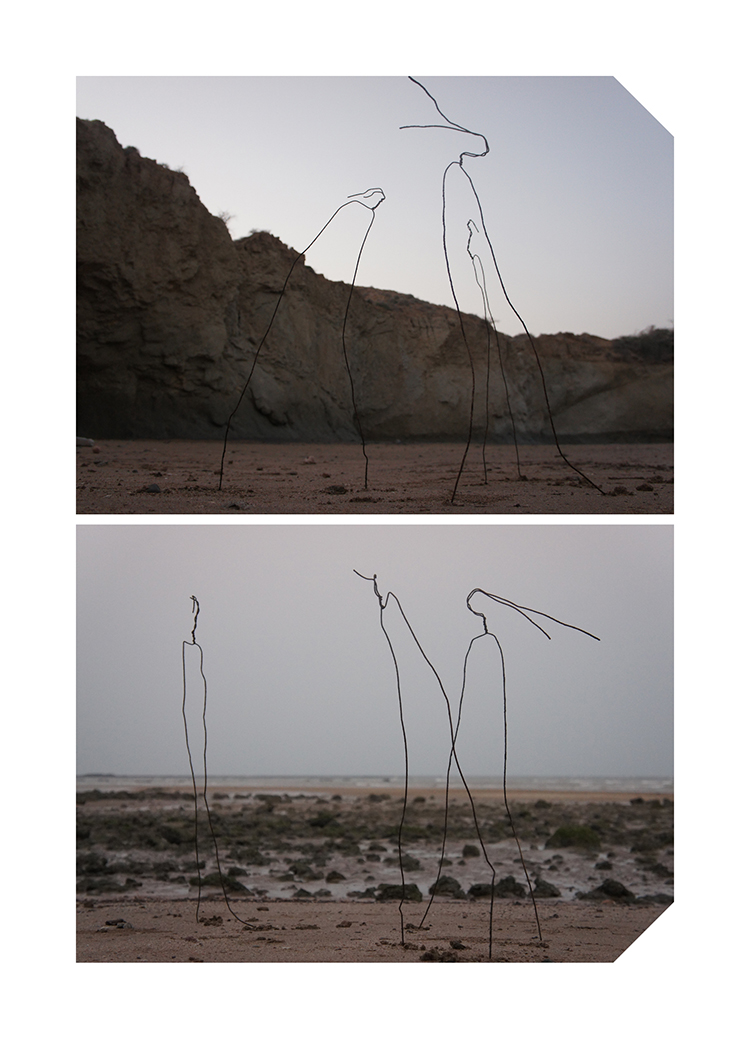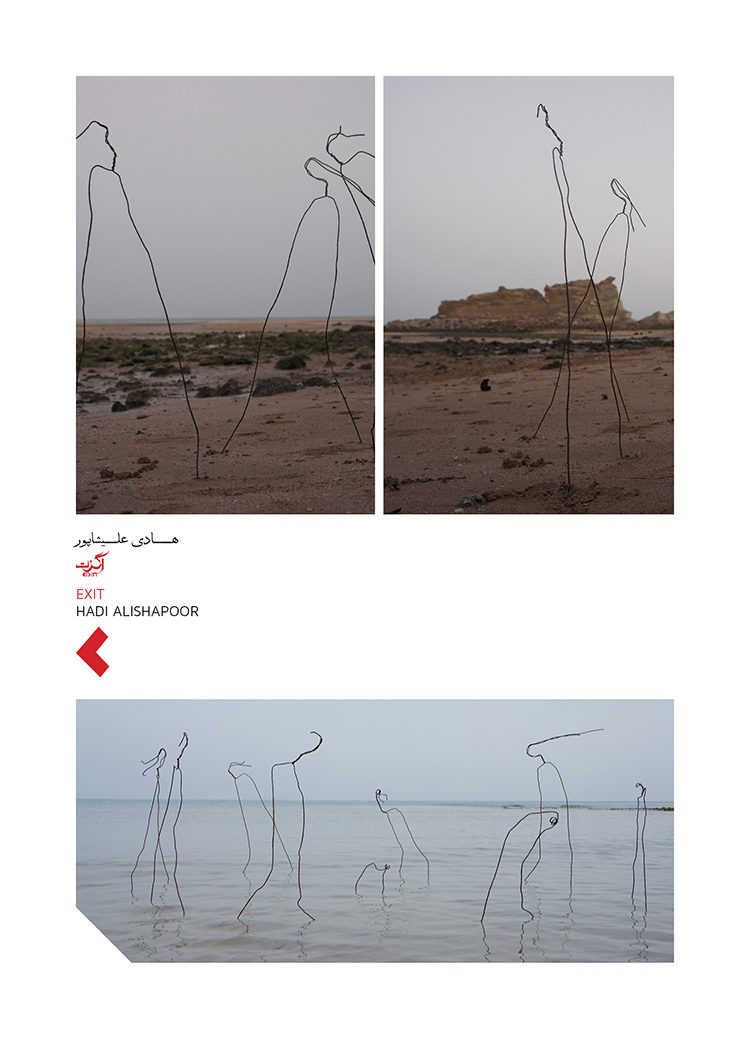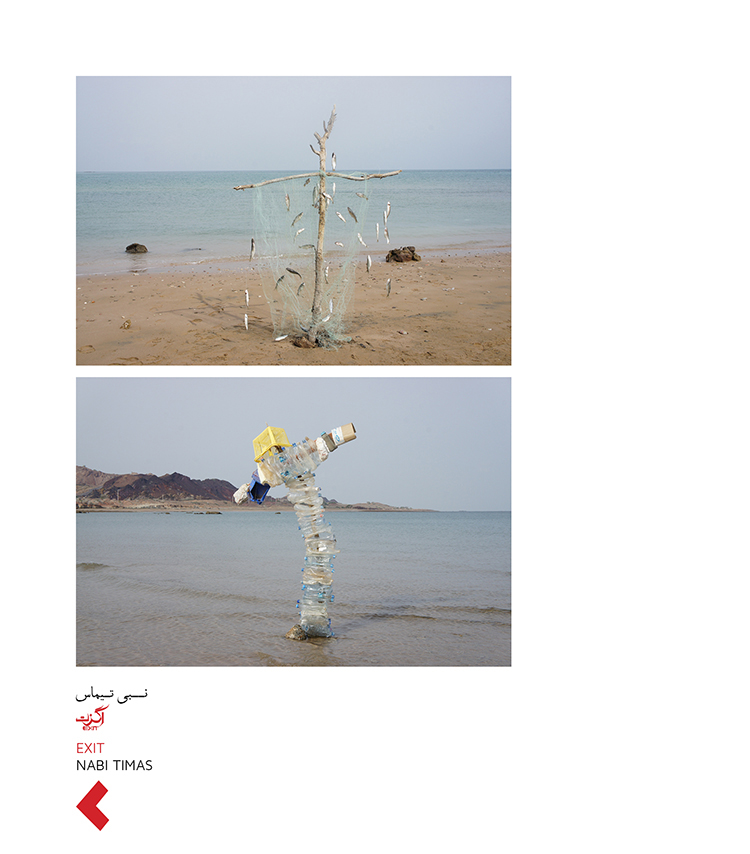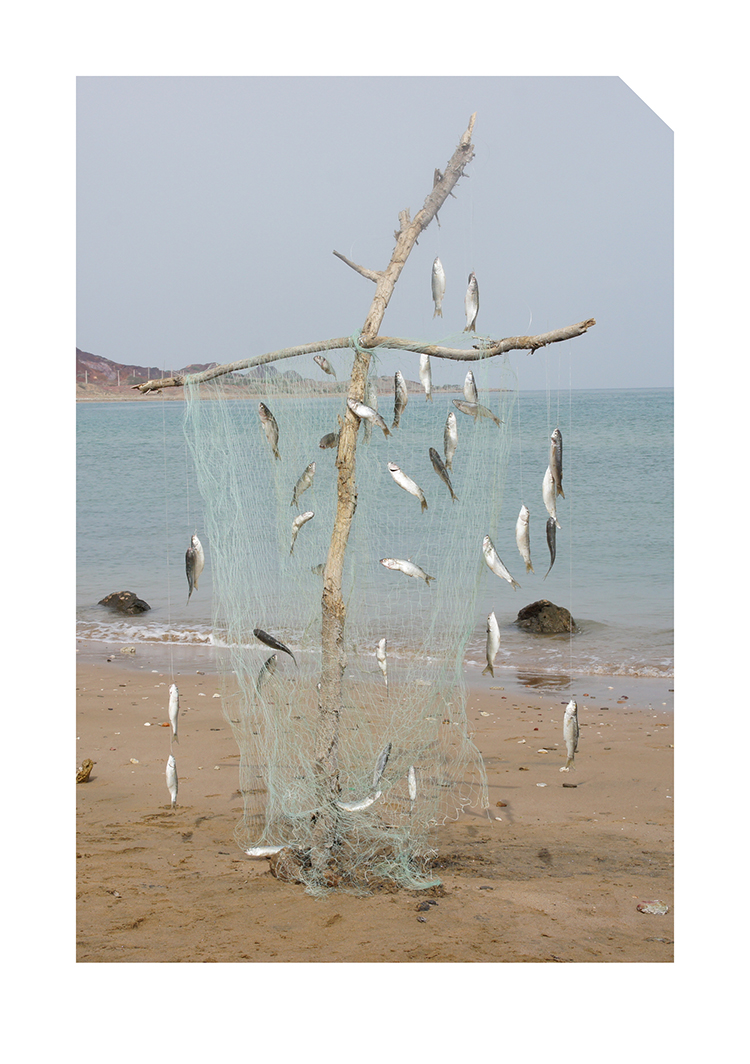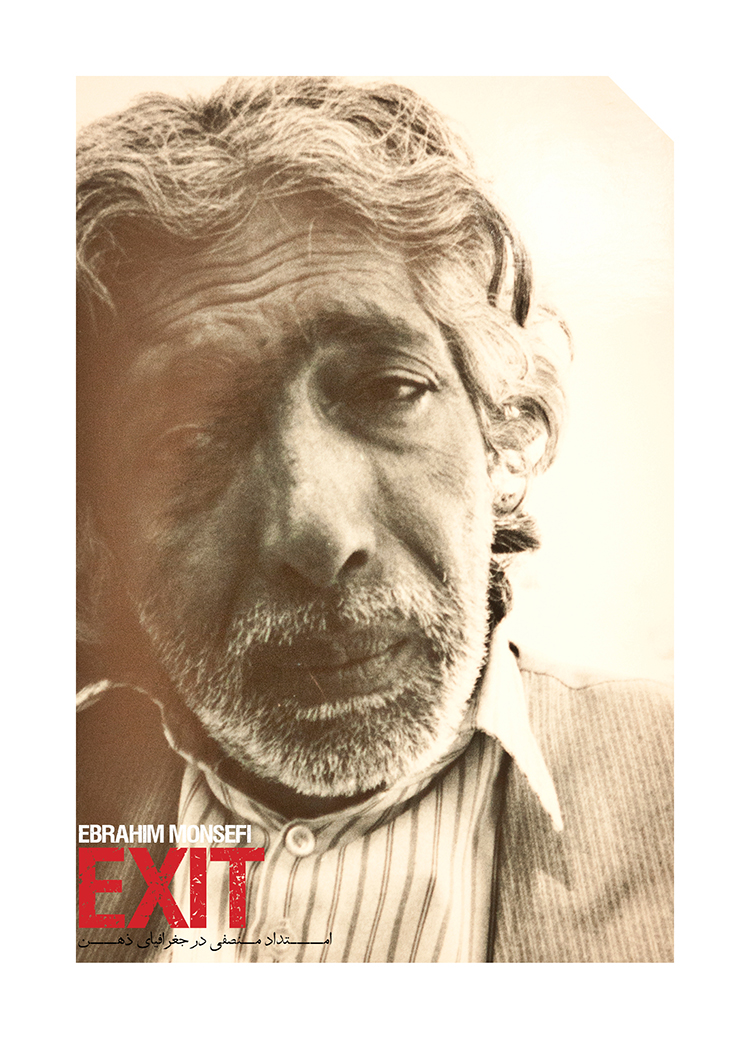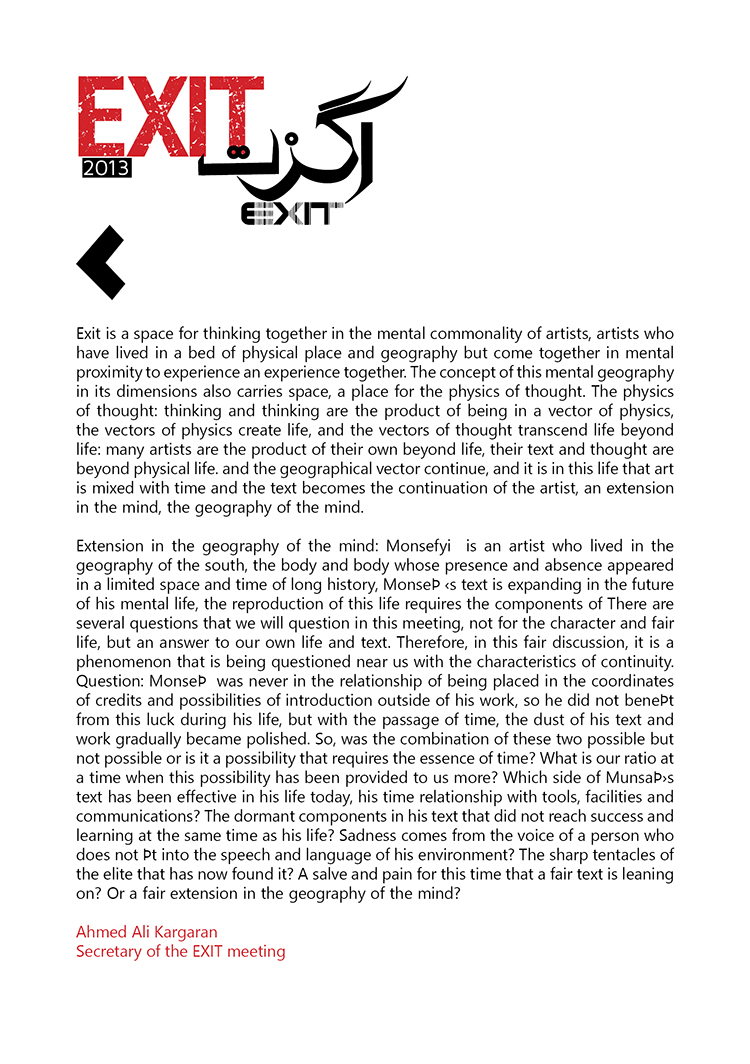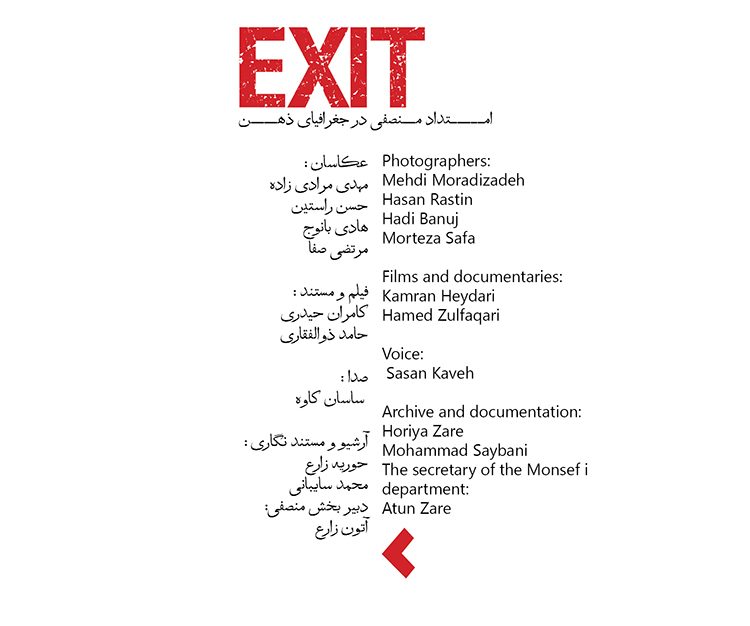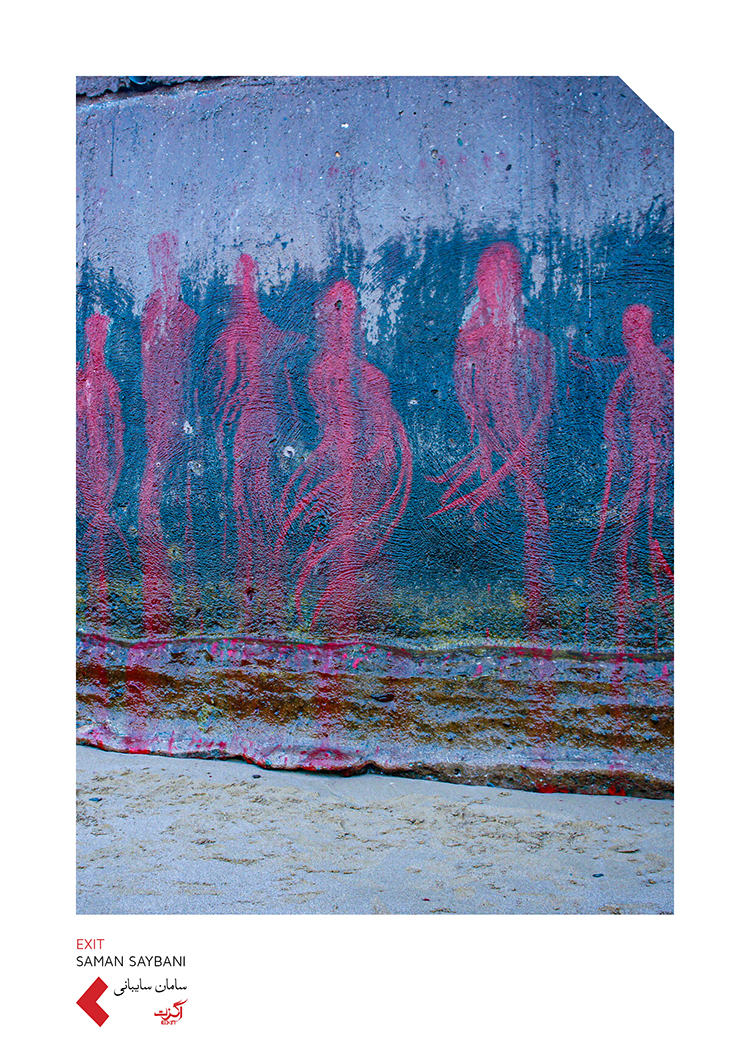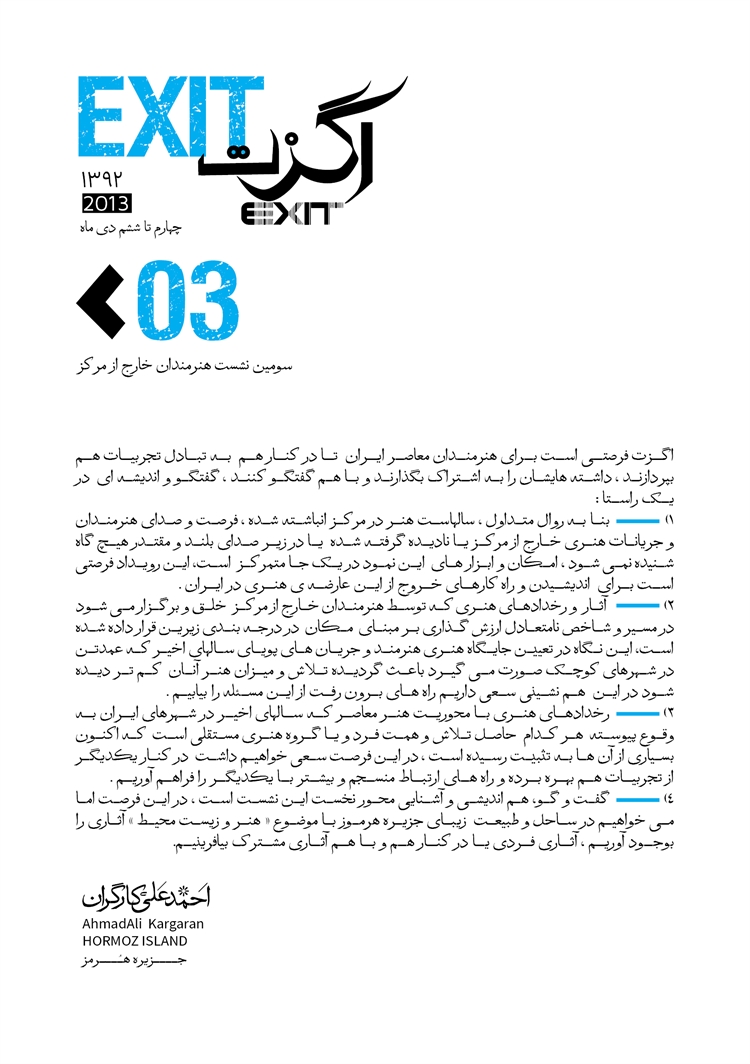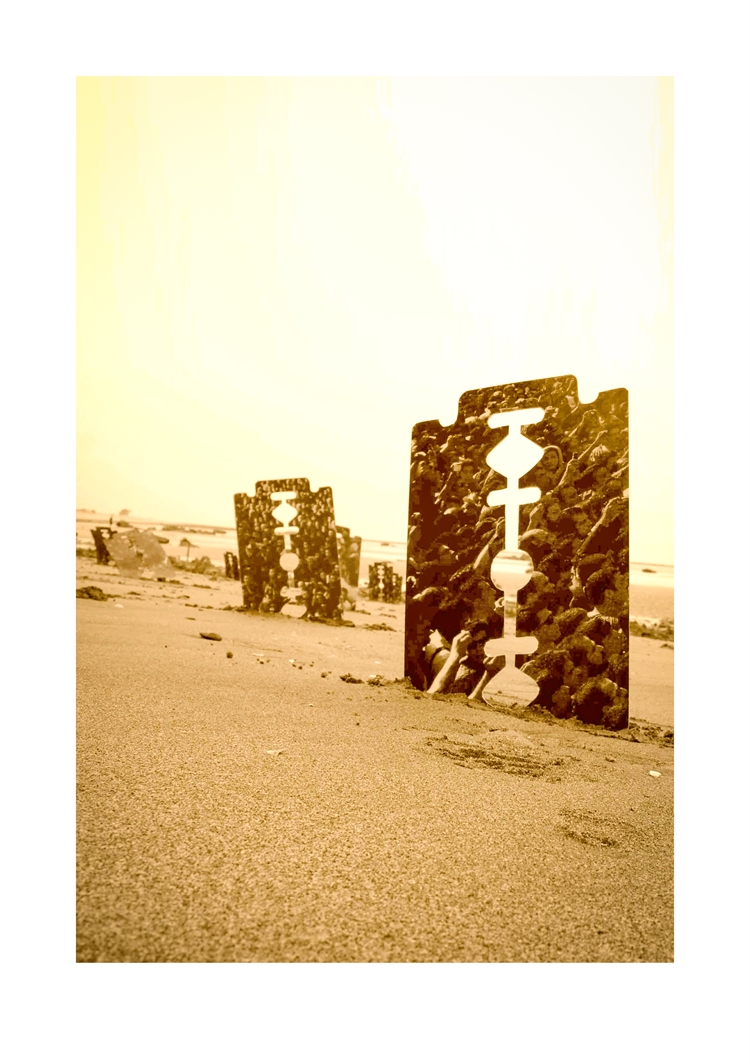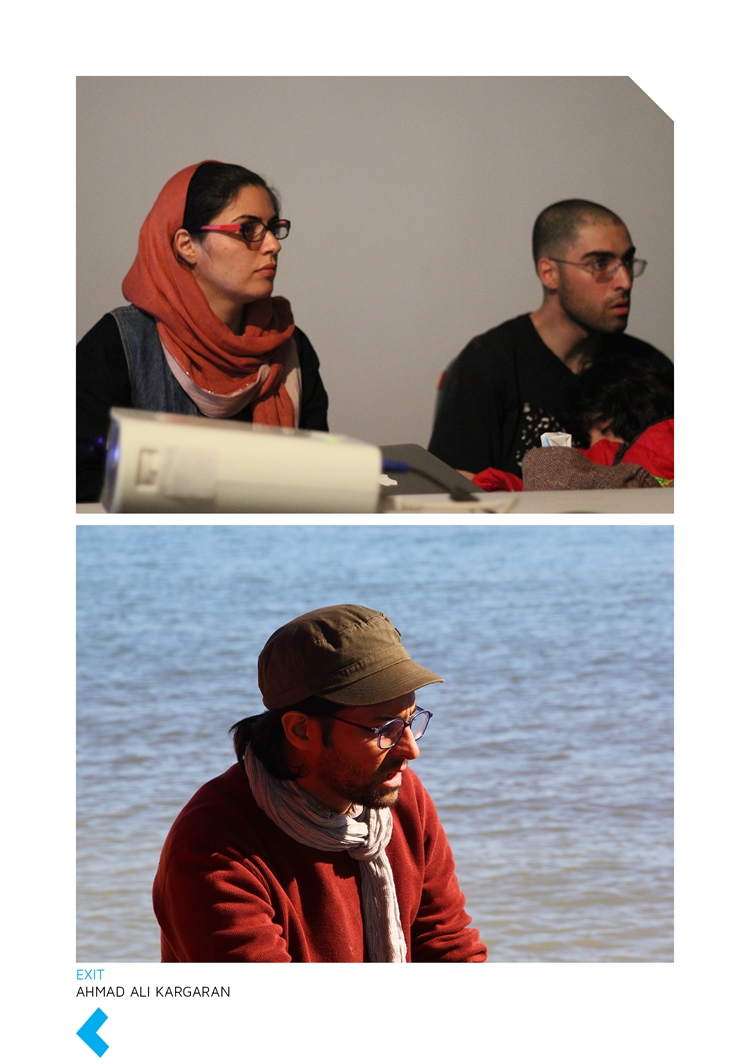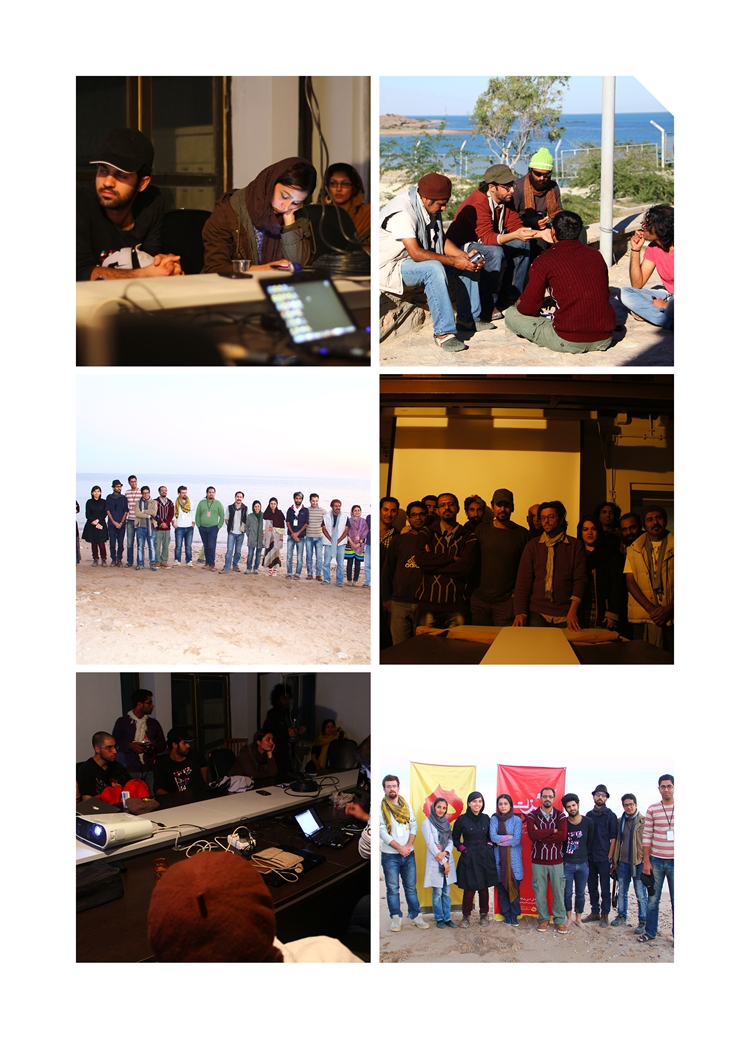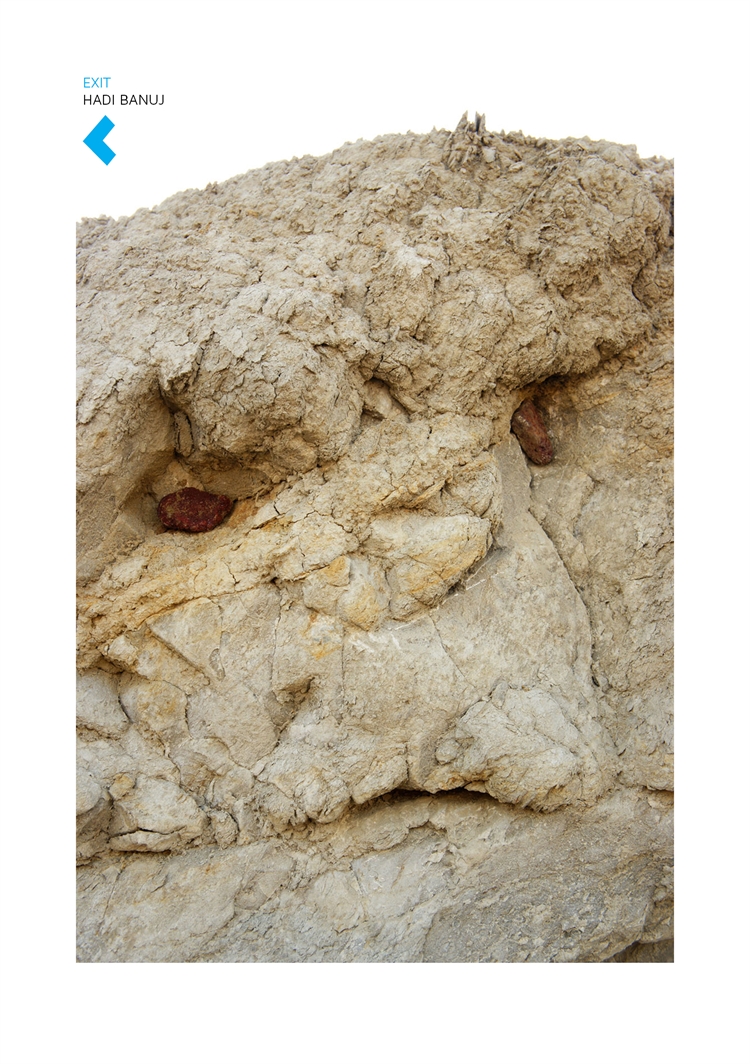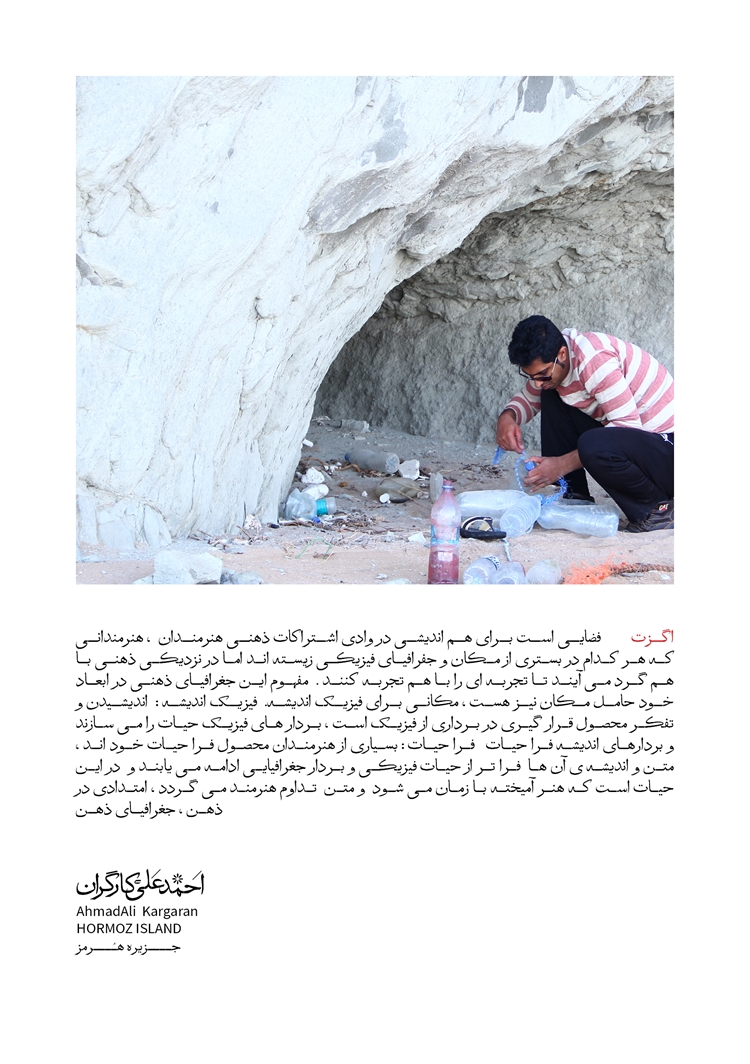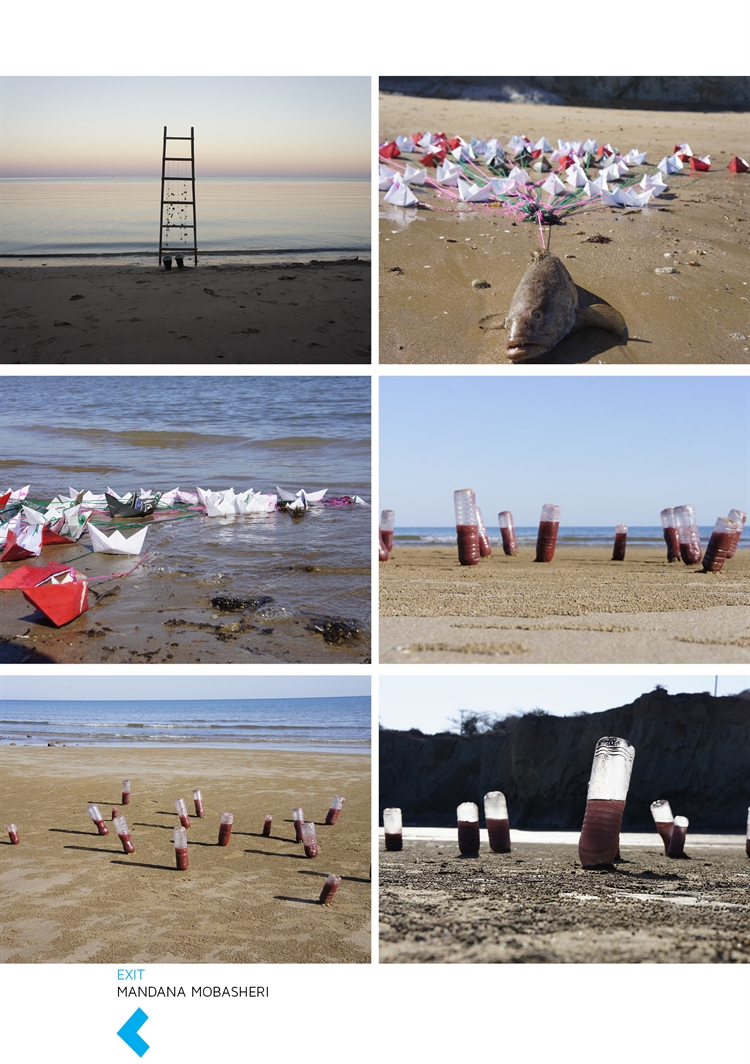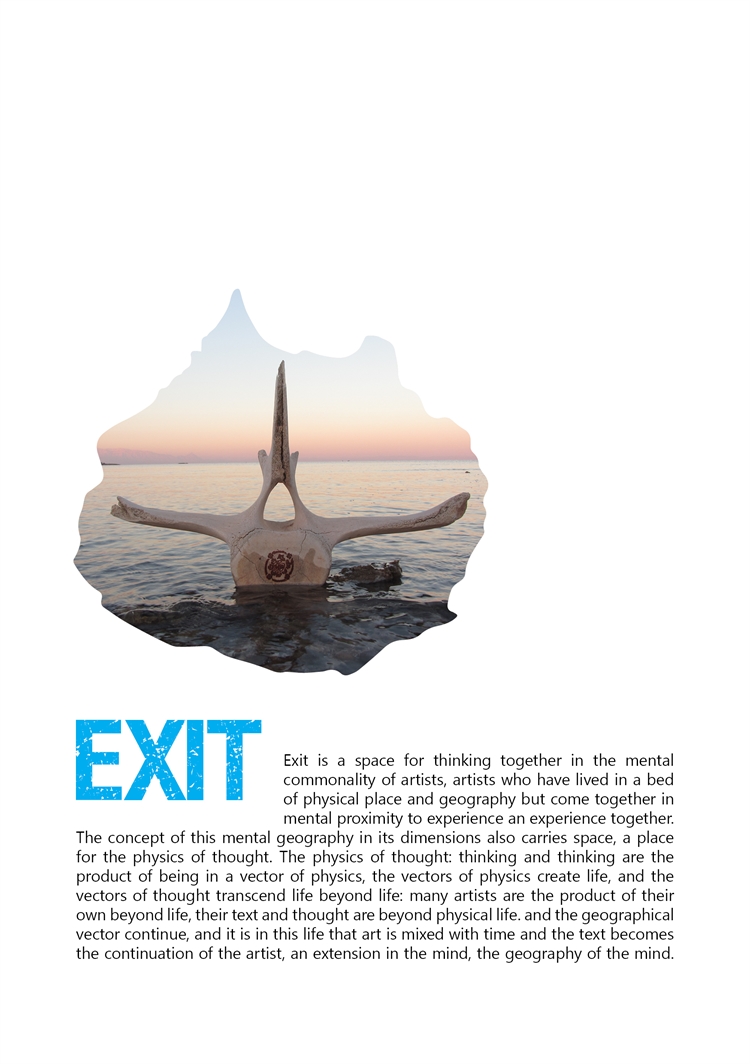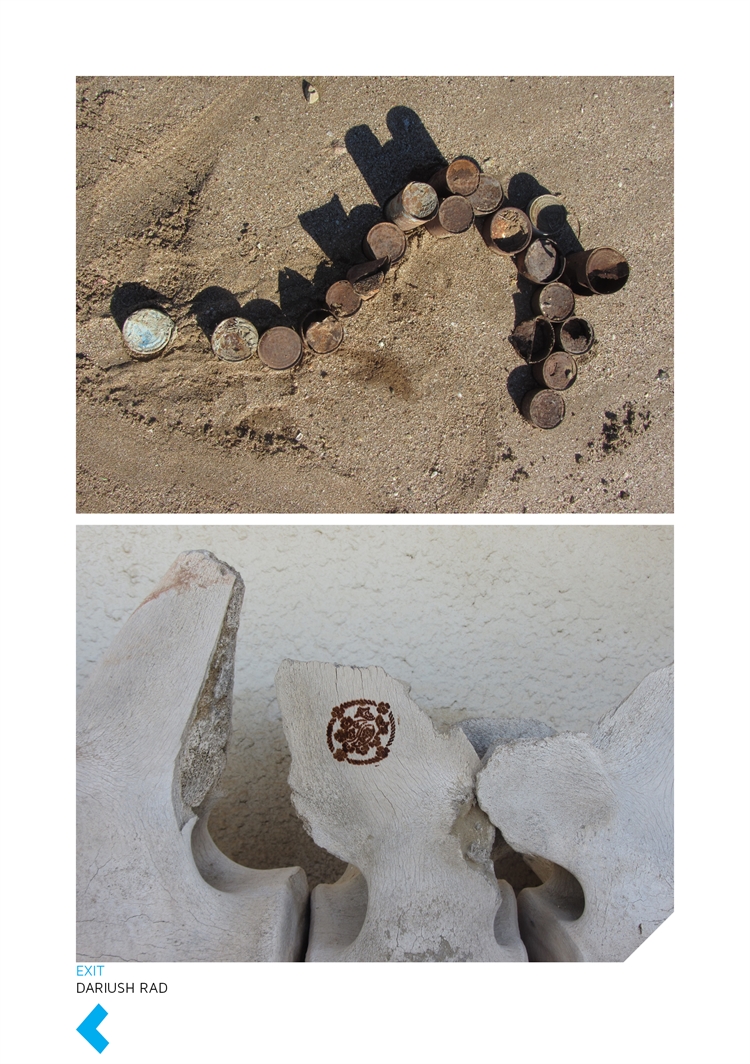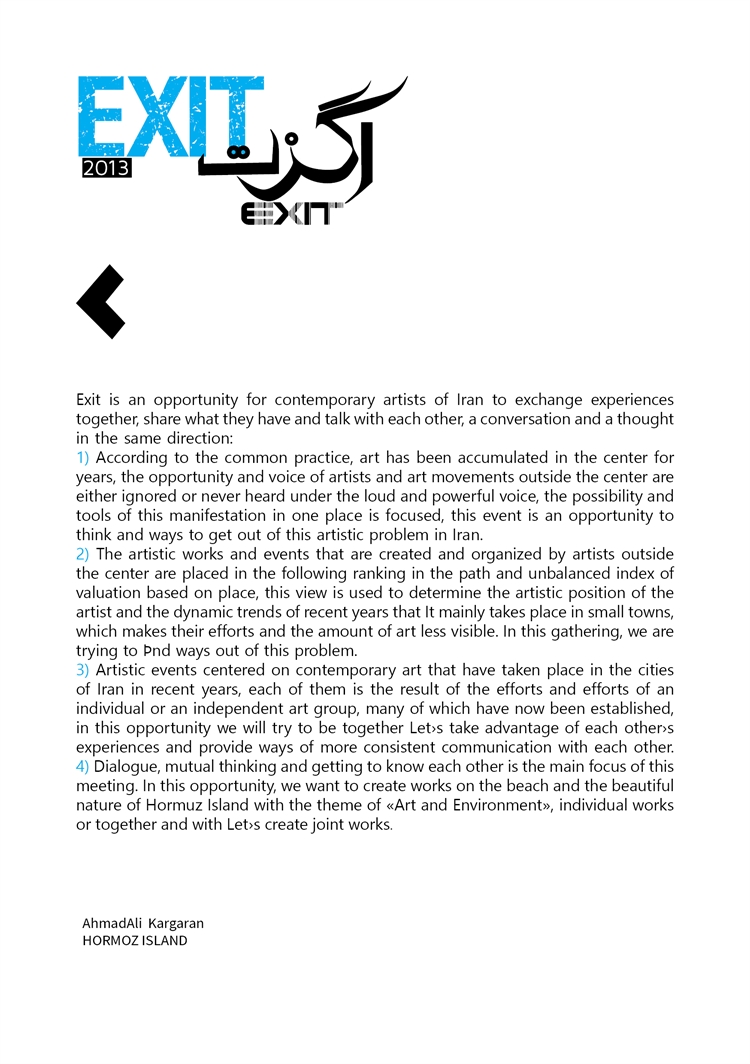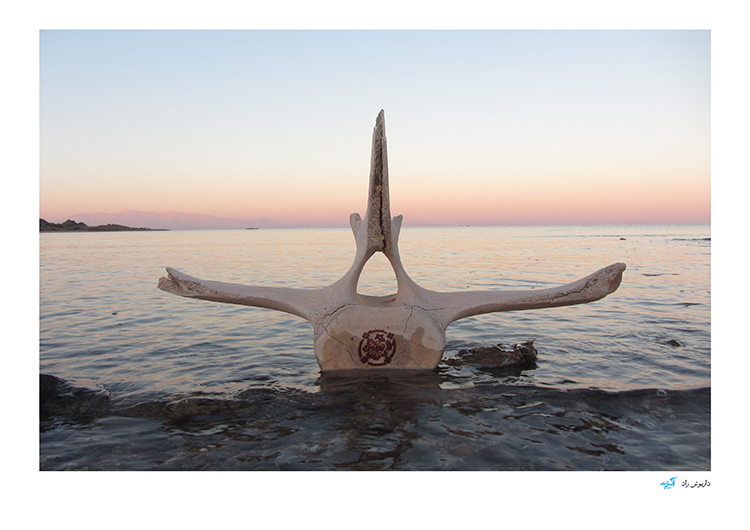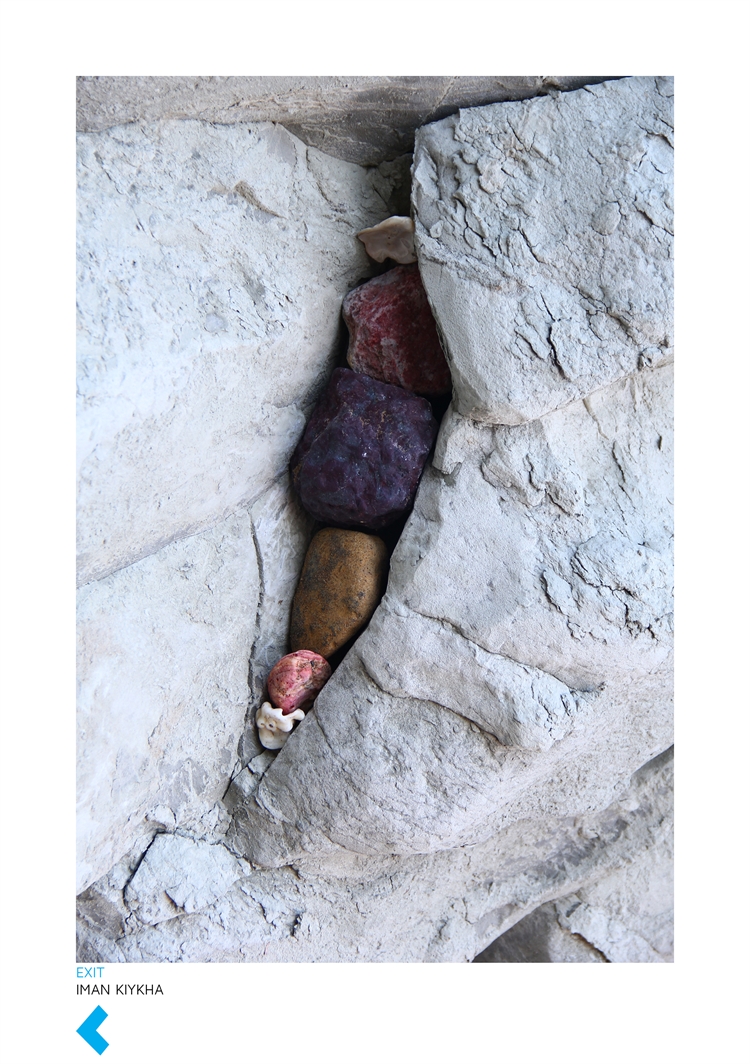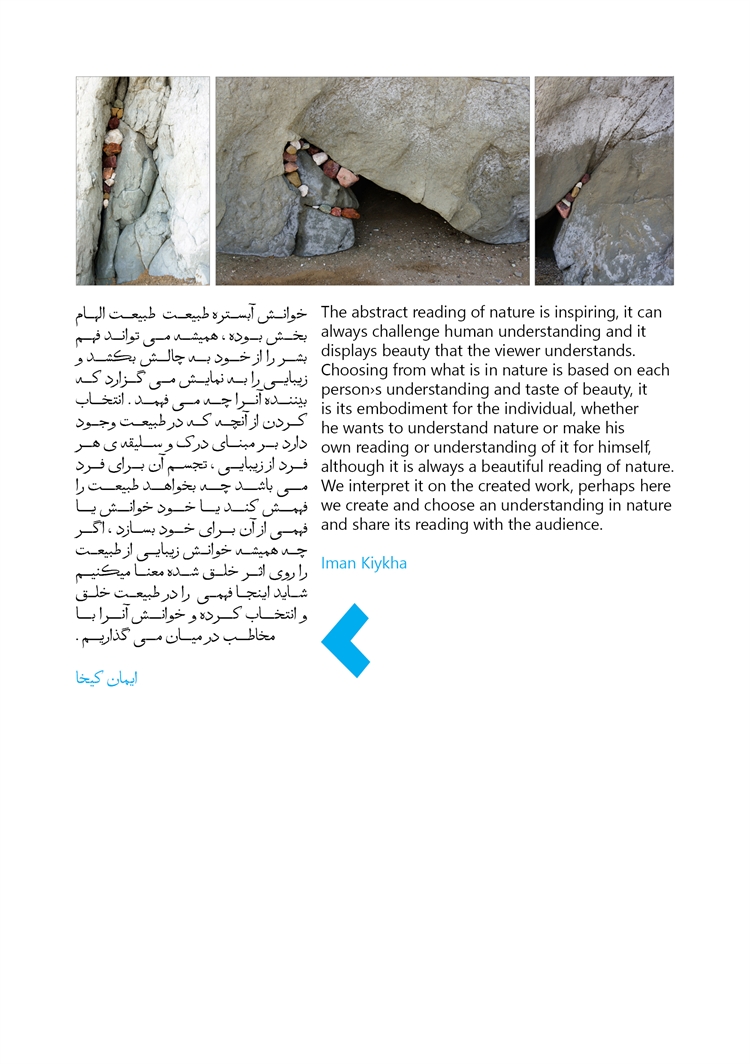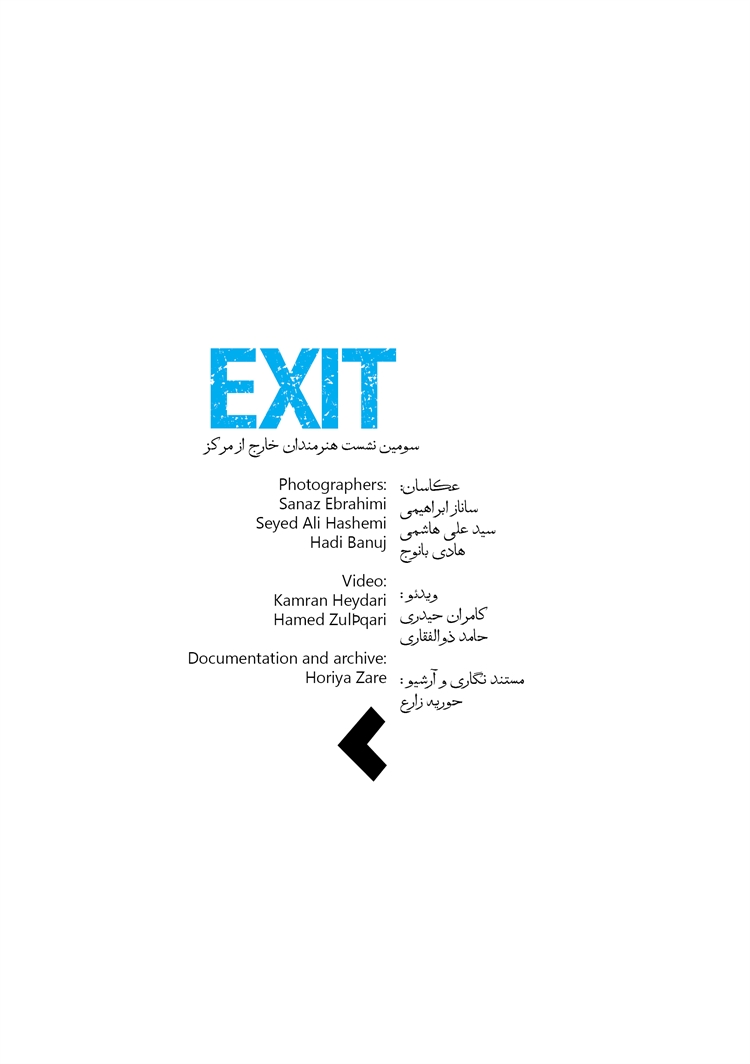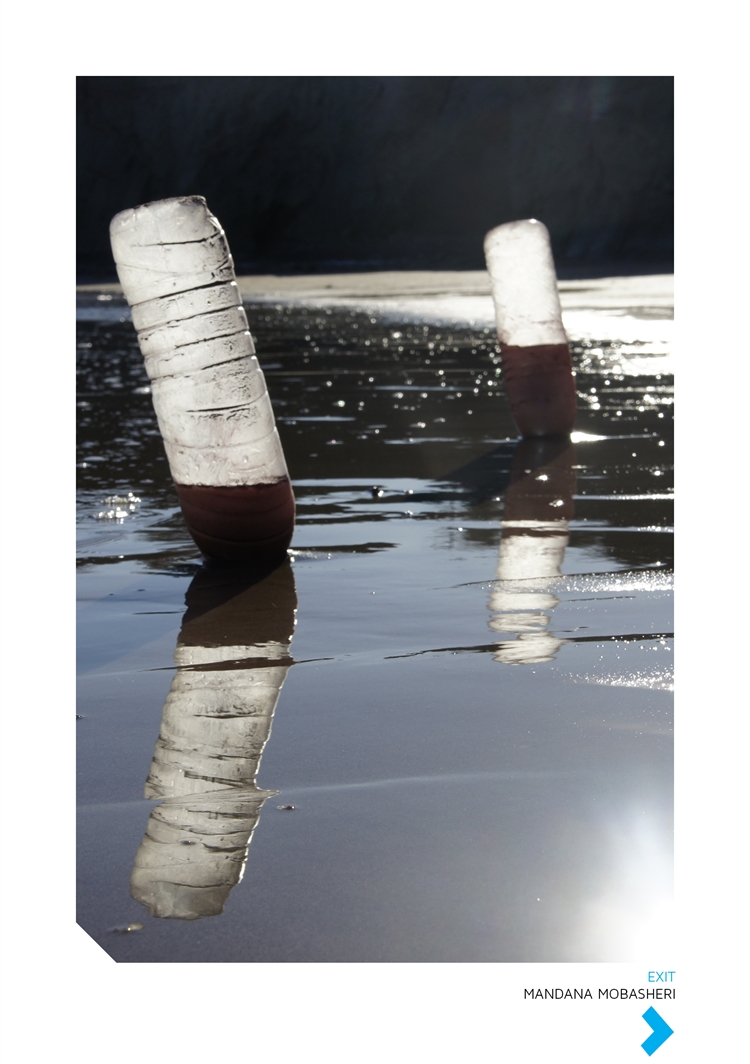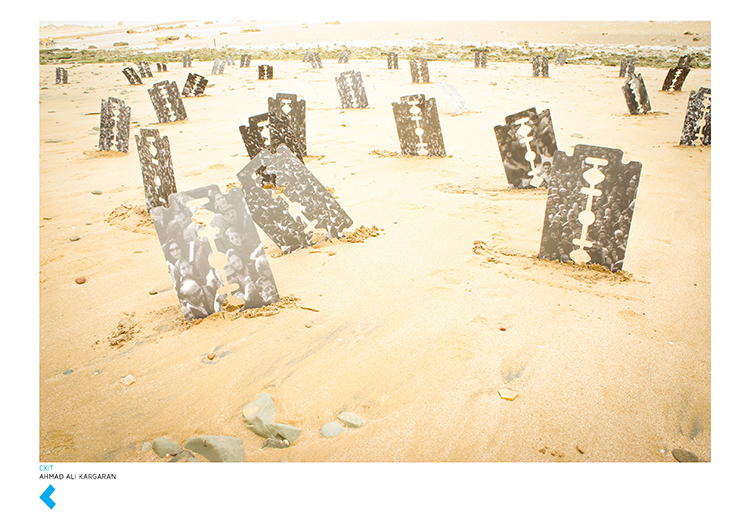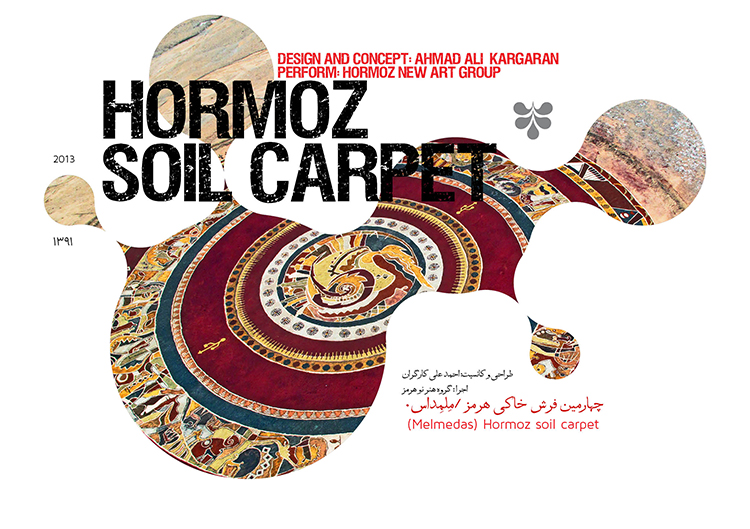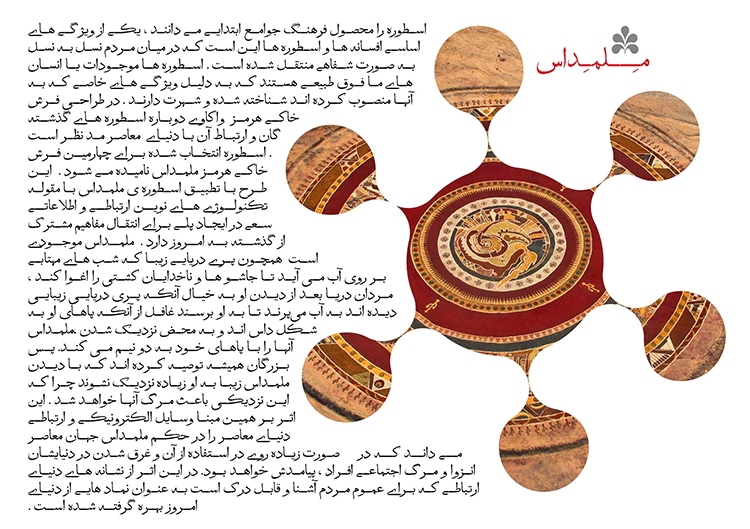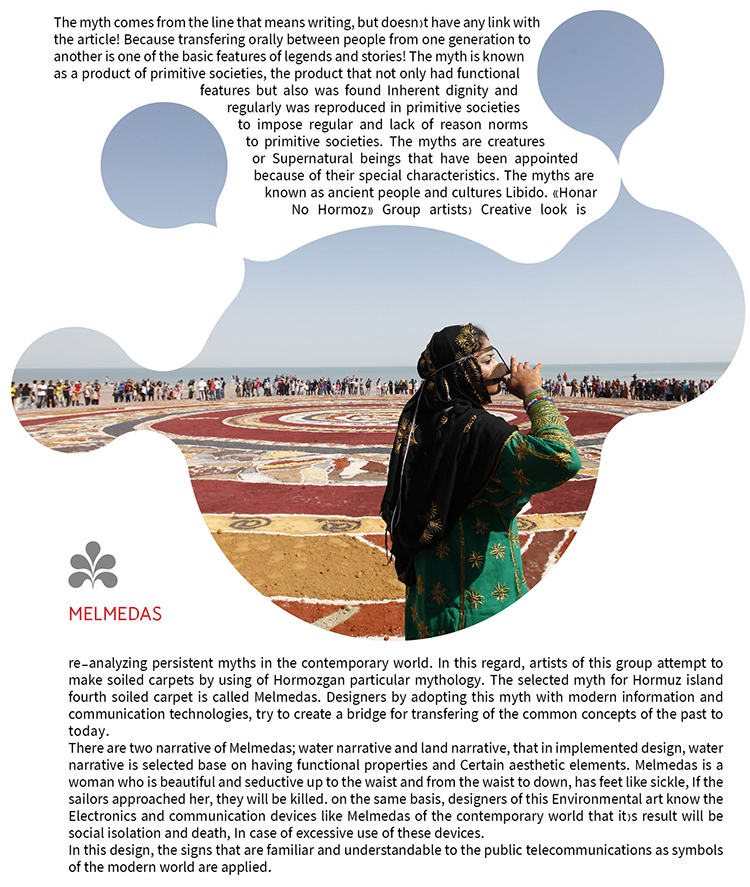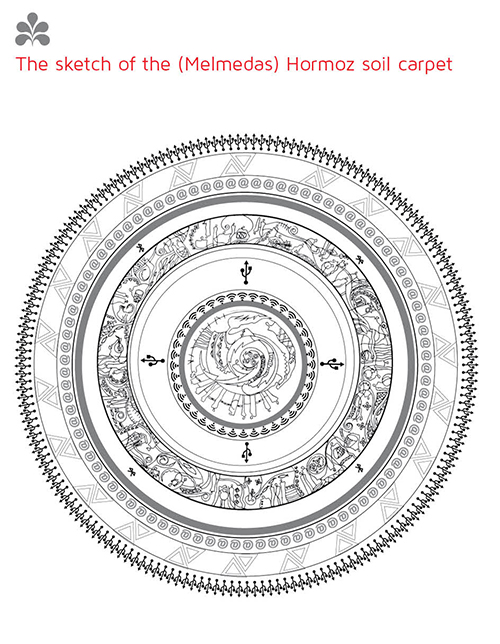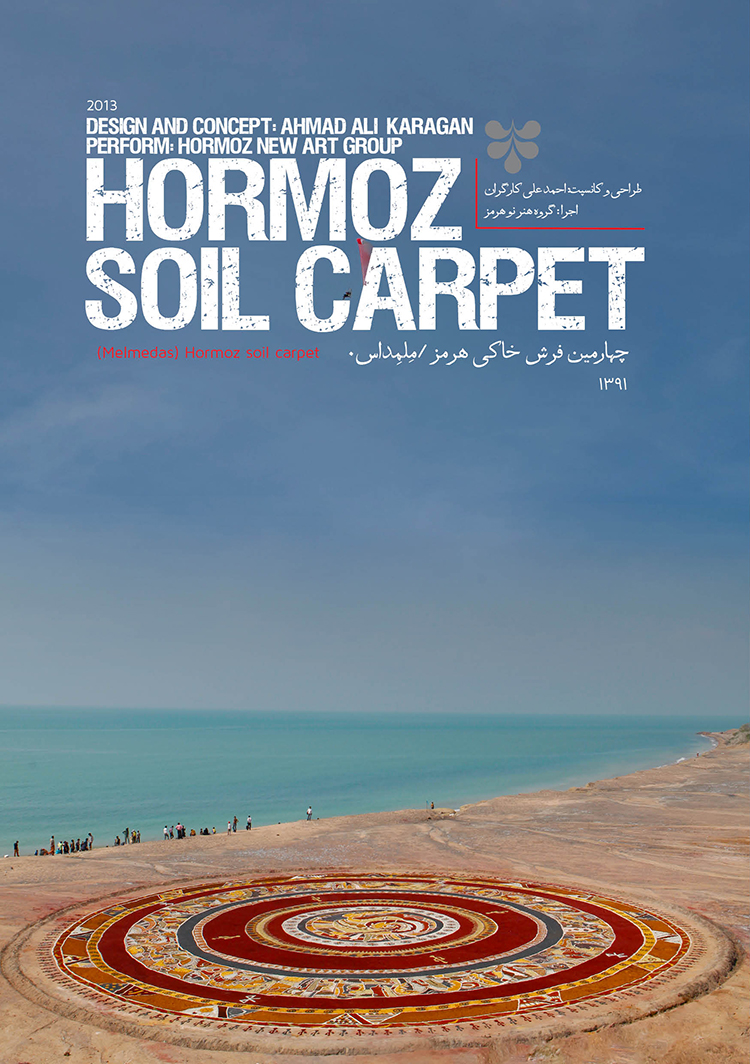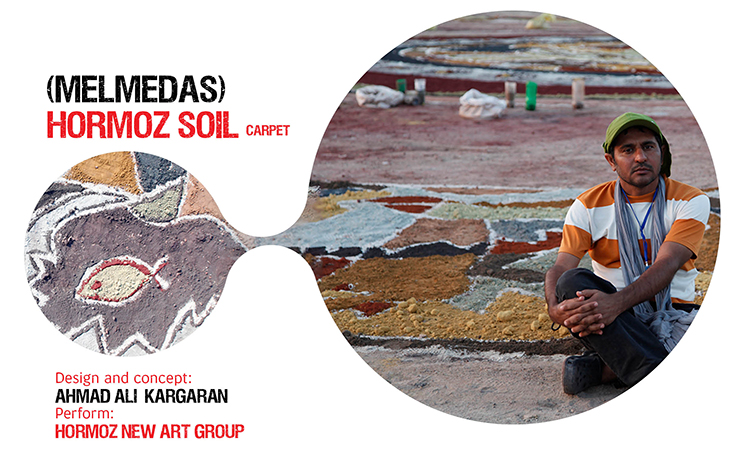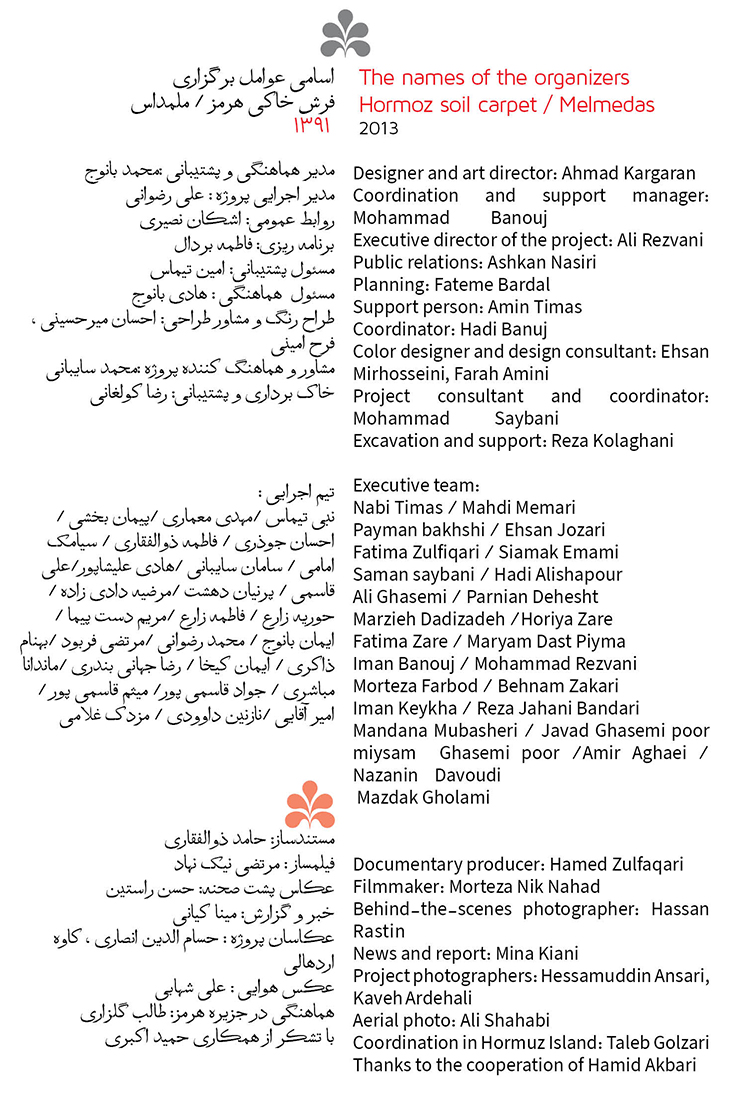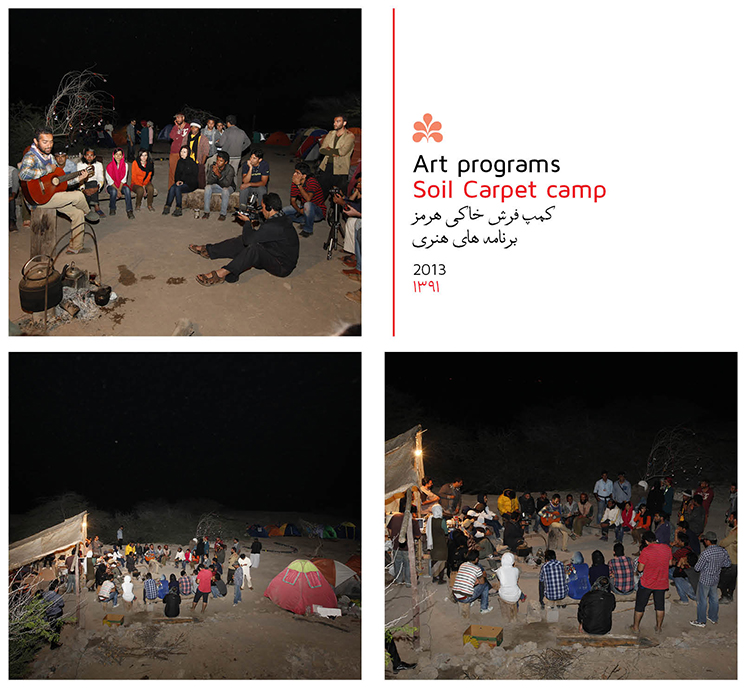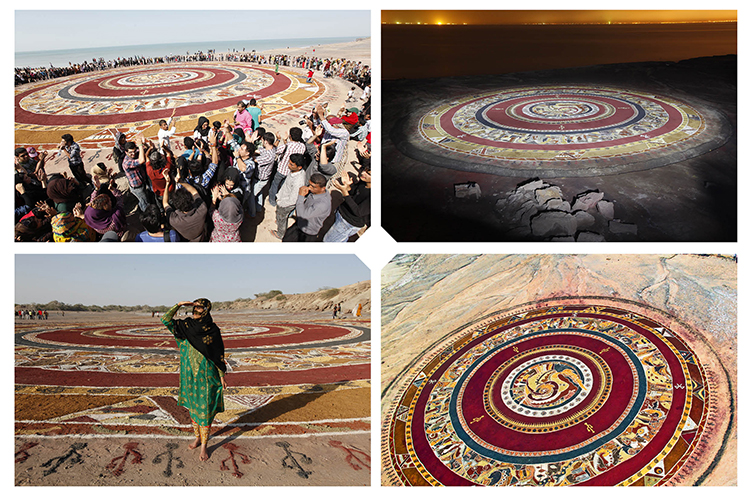![......[ AhmadAli Kargaran ]......](https://www.blogsky.com/images/logo/ak-96x96.jpg)
......[ AhmadAli Kargaran ]......
Artist .environmental art & site spesific installation .Born in Gambroon city. Iran.![......[ AhmadAli Kargaran ]......](https://www.blogsky.com/images/logo/ak-96x96.jpg)
......[ AhmadAli Kargaran ]......
Artist .environmental art & site spesific installation .Born in Gambroon city. Iran.| HISTORY|Hormuz Soil Carpet
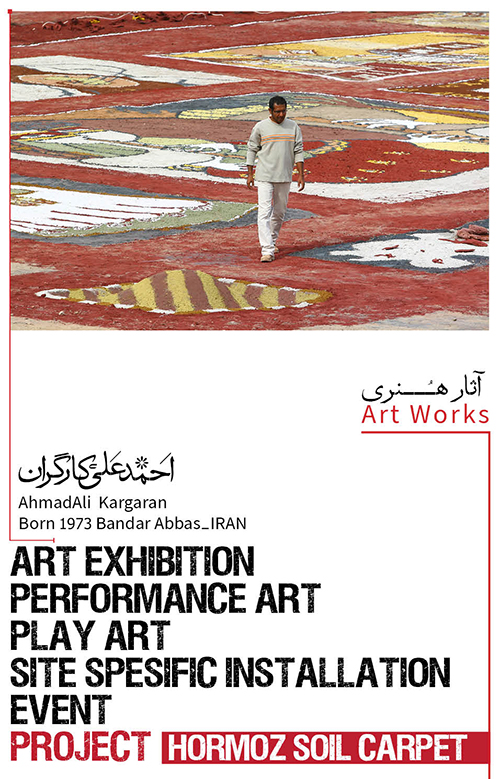
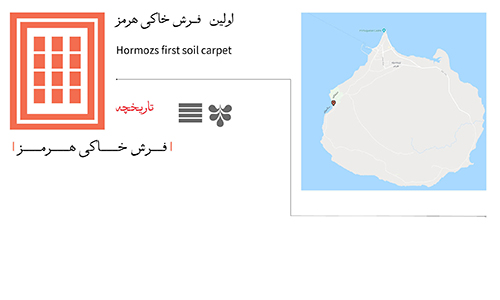
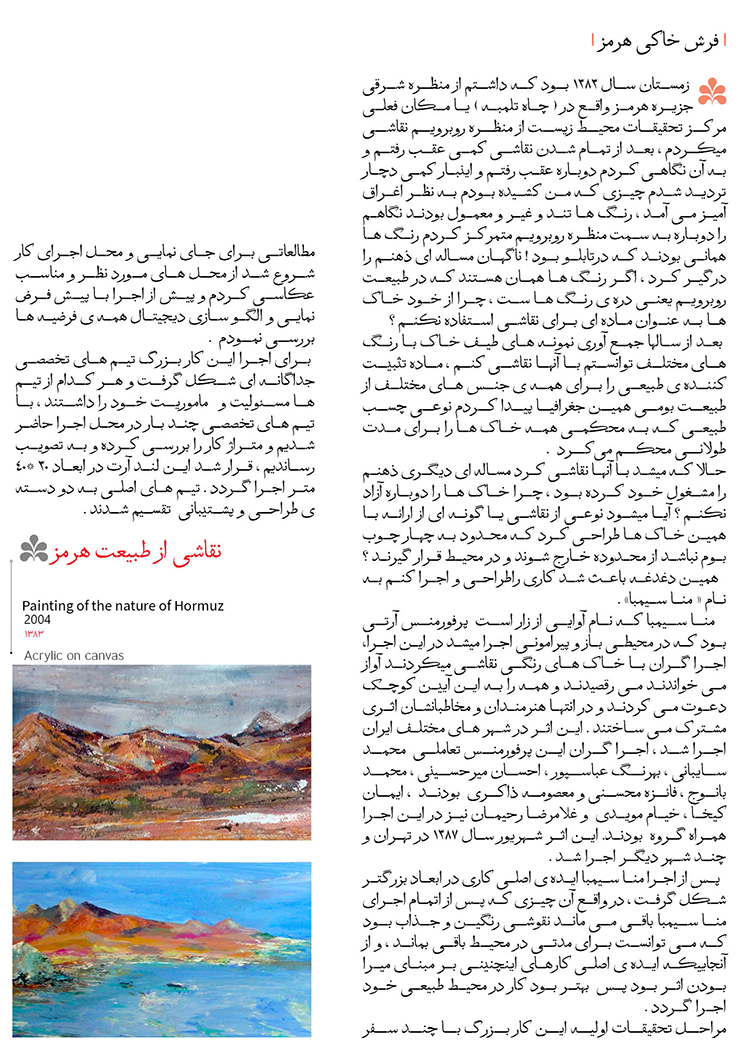
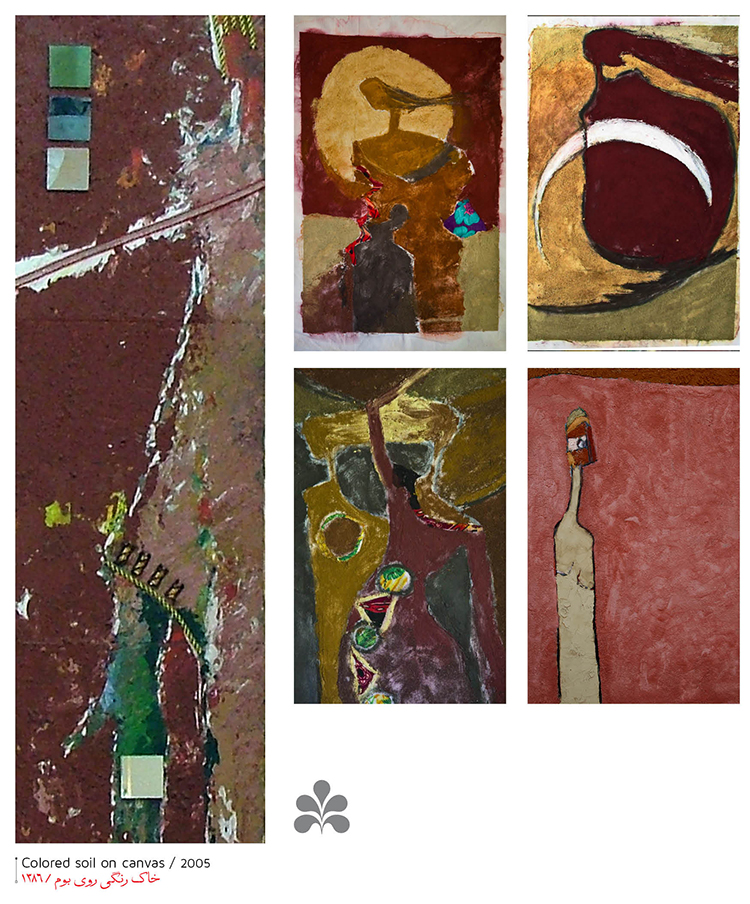
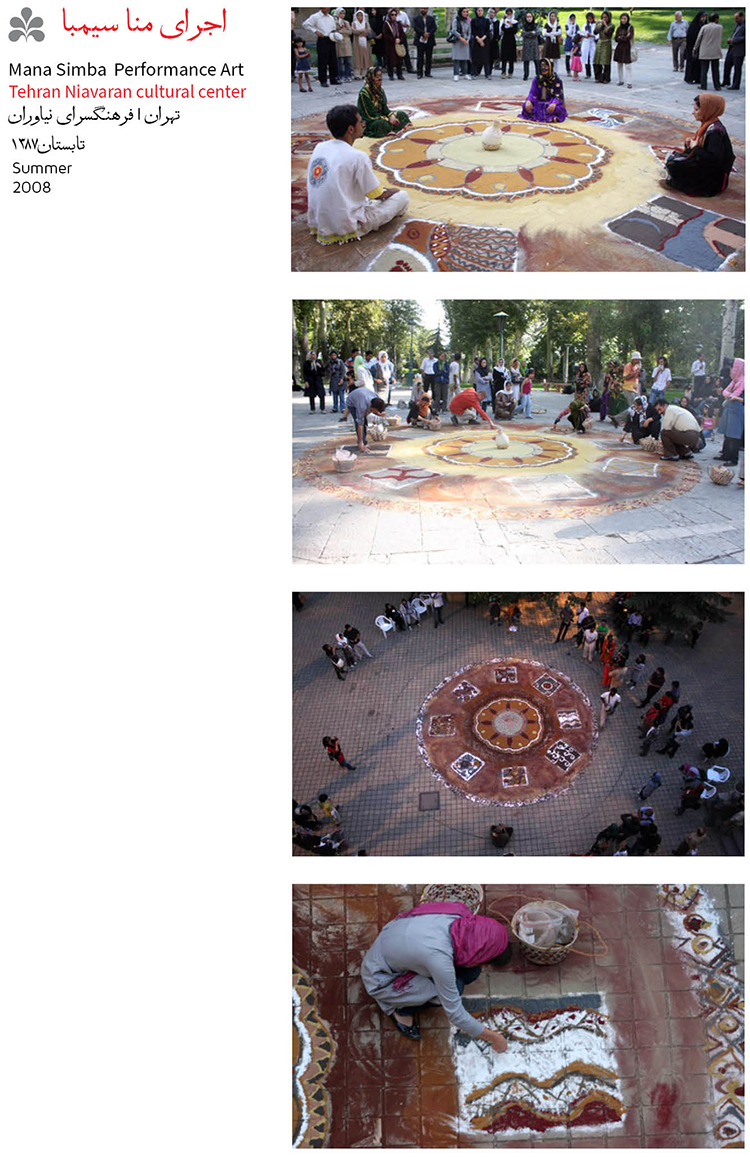
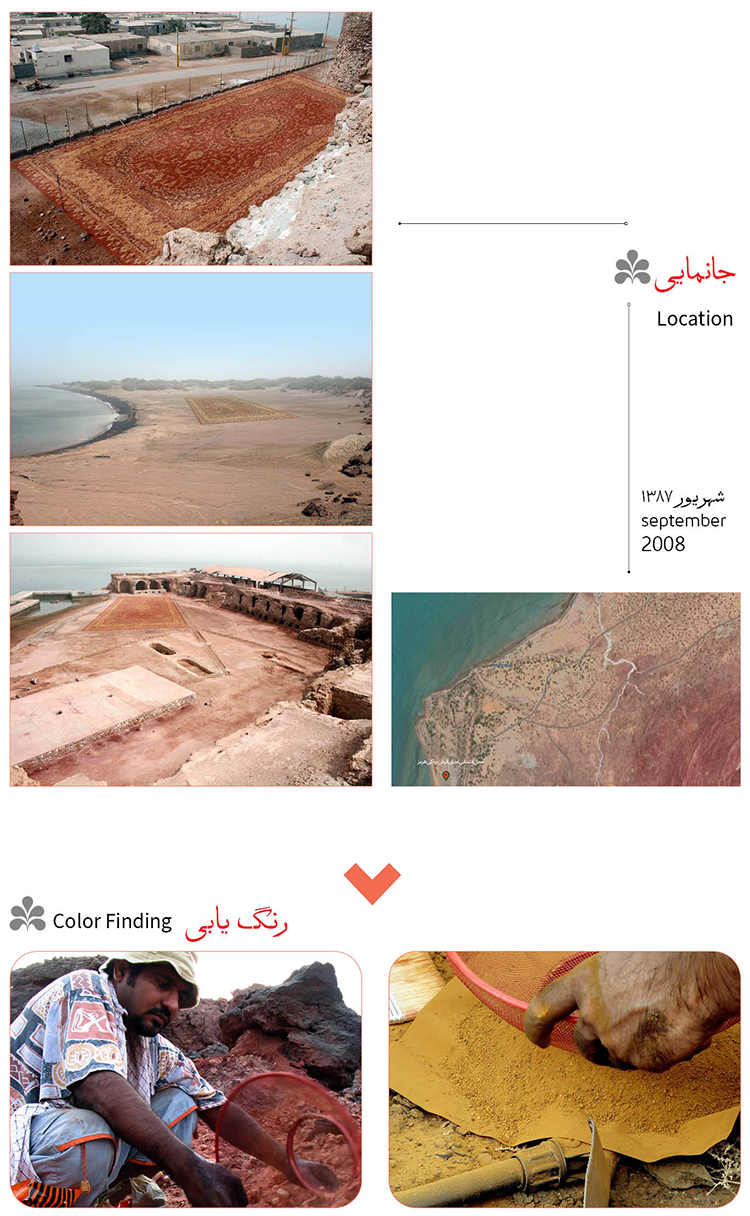
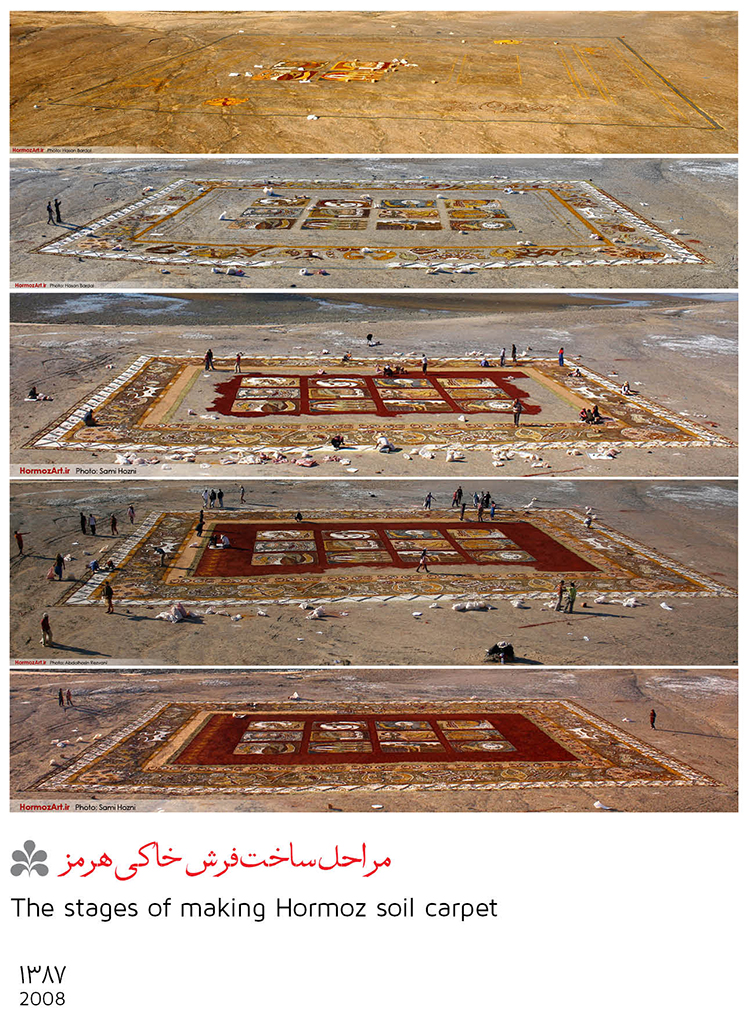
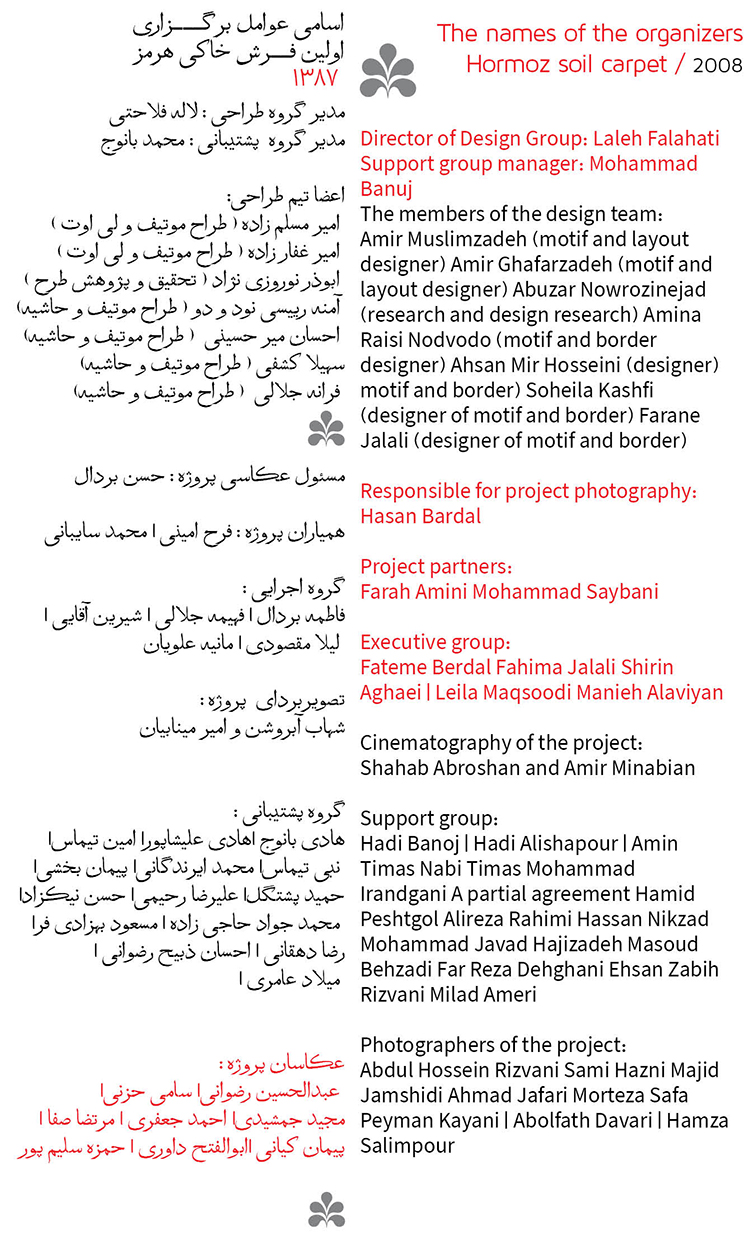
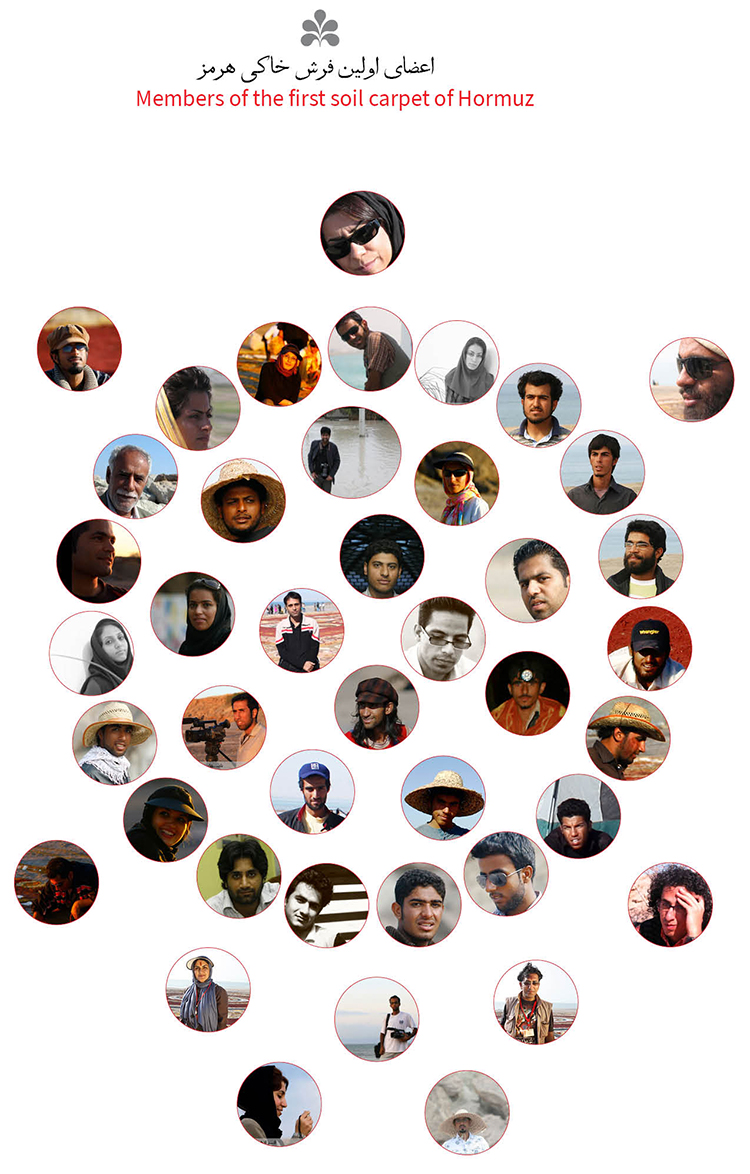
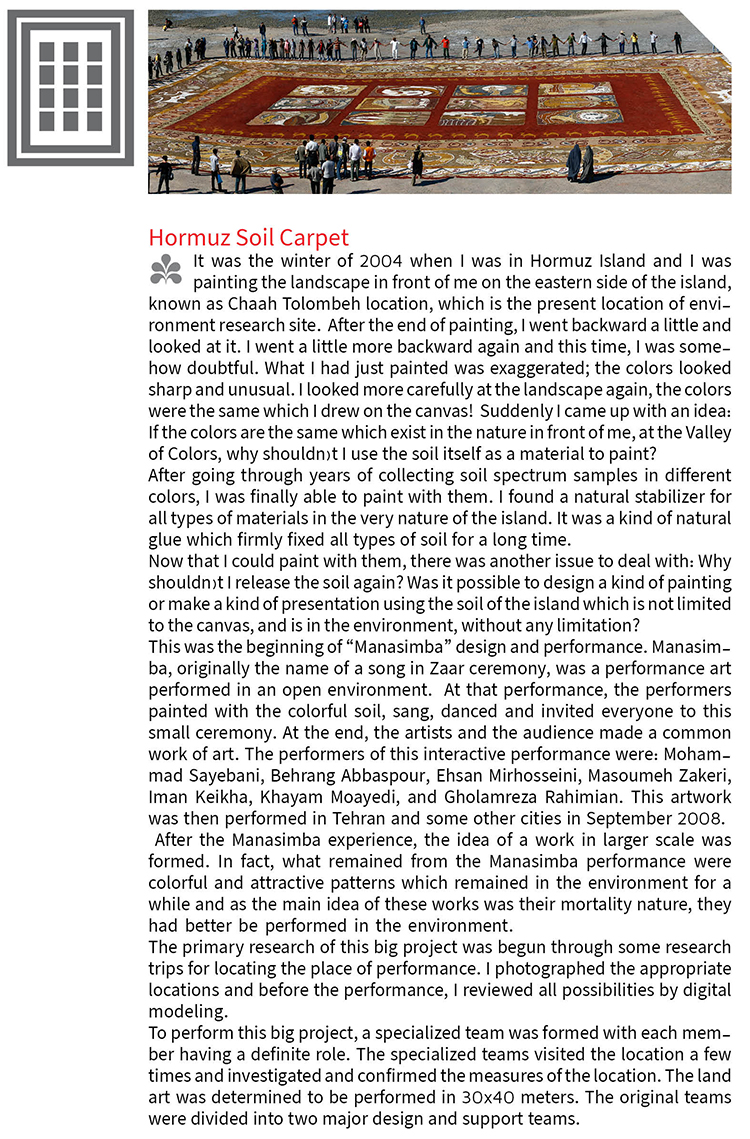
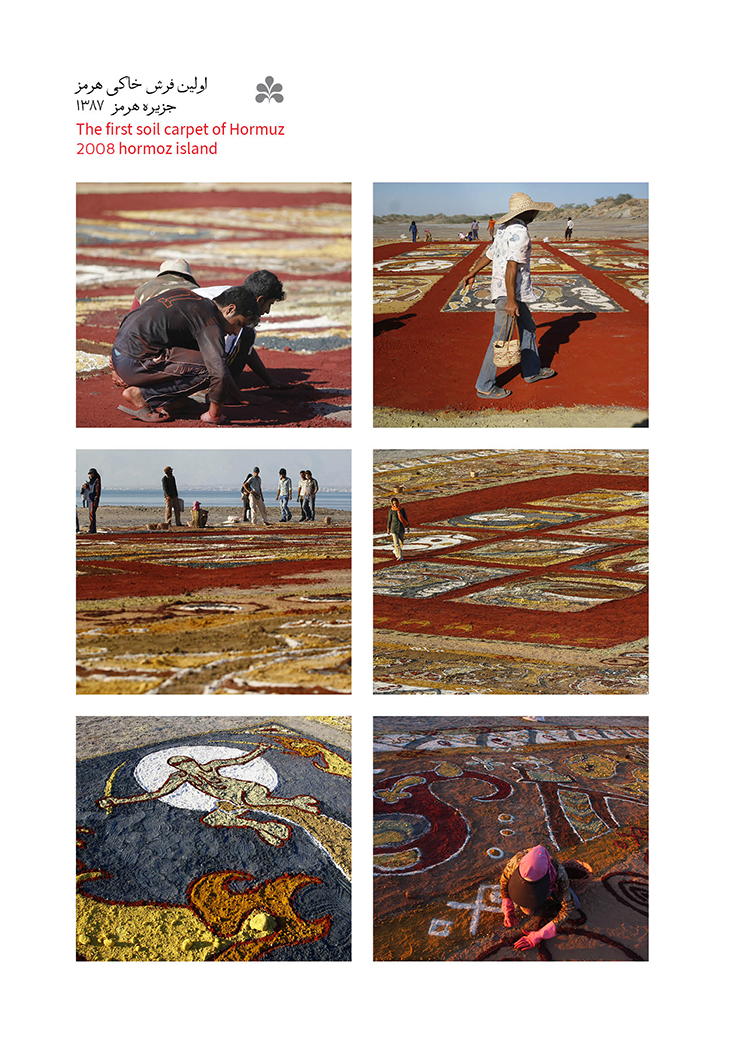
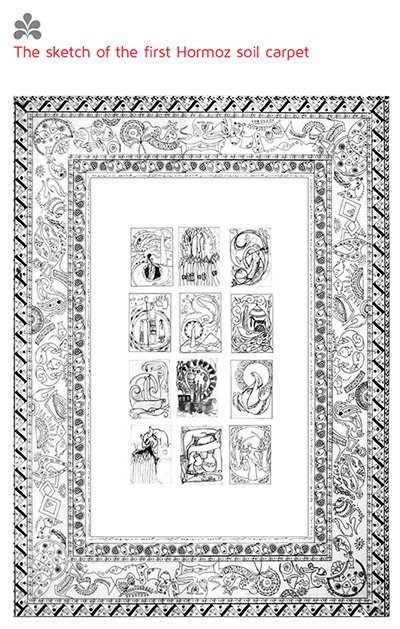
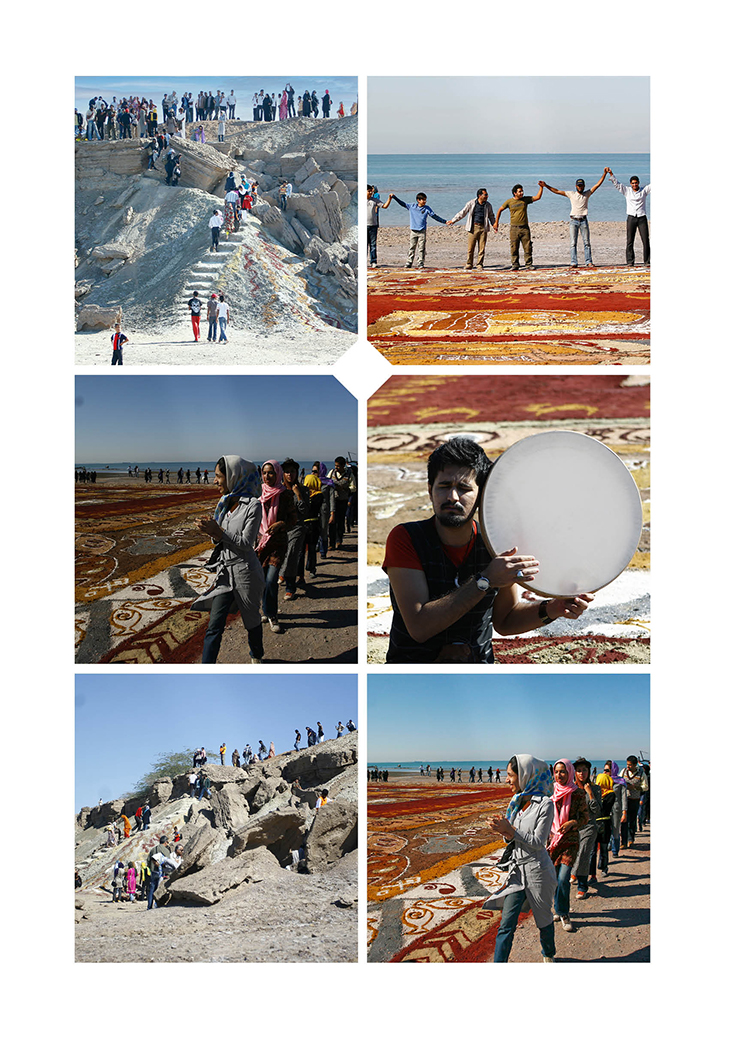
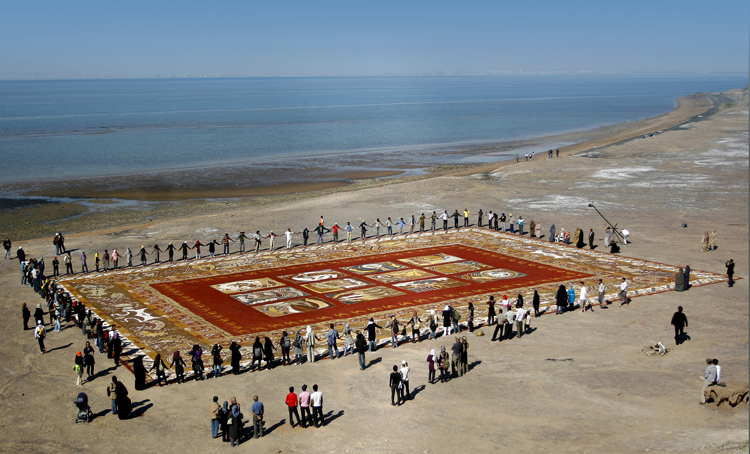
It was the winter of 2004 when I was in Hormuz Island and I was painting the landscape in front of me on the eastern side of the island, known as Chaah Tolombeh location, which is the present location of environment research site. After the end of painting, I went backward a little and looked at it. I went a little more backward again and this time, I was somehow doubtful. What I had just painted was exaggerated; the colors looked sharp and unusual. I looked more carefully at the landscape again, the colors were the same which I drew on the canvas! Suddenly I came up with an idea: If the colors are the same which exist in the nature in front of me, at the Valley of Colors, why shouldn't I use the soil itself as a material to paint?
After going through years of collecting soil spectrum samples in different colors, I was finally able to paint with them. I found a natural stabilizer for all types of materials in the very nature of the island. It was a kind of natural glue which firmly fixed all types of soil for a long time.
Now that I could paint with them, there was another issue to deal with: Why shouldn't I release the soil again? Was it possible to design a kind of painting or make a kind of presentation using the soil of the island which is not limited to the canvas, and is in the environment, without any limitation?
This was the beginning of “Manasimba” design and performance. Manasimba, originally the name of a song in Zaar ceremony, was a performance art performed in an open environment. At that performance, the performers painted with the colorful soil, sang, danced and invited everyone to this small ceremony. At the end, the artists and the audience made a common work of art. The performers of this interactive performance were: Mohammad Sayebani, Behrang Abbaspour, Ehsan Mirhosseini, Masoumeh Zakeri, Iman Keikha, Khayam Moayedi, and Gholamreza Rahimian. This artwork was then performed in Tehran and some other cities in September 2008.
After the Manasimba experience, the idea of a work in larger scale was formed. In fact, what remained from the Manasimba performance were colorful and attractive patterns which remained in the environment for a while and as the main idea of these works was their mortality nature, they had better be performed in the environment.
The primary research of this big project was begun through some research trips for locating the place of performance. I photographed the appropriate locations and before the performance, I reviewed all possibilities by digital modeling.
To perform this big project, a specialized team was formed with each member having a definite role. The specialized teams visited the location a few times and investigated and confirmed the measures of the location. The land art was determined to be performed in 30x40 meters. The original teams were divided into two major design and support teams. The head of design team was Laleh Falahati and Mohammad Banouj was the head of support team.
Members of the design team: Amir Moslemzadeh and Amir Ghaffarzadeh (motif and layout design); Abouzar Norouzinezhad (design research);
Ameneh Raeisi, Ehsan Mirhosseini, Soheila Kashfi, and Farzaneh Jalali (motif and margin design).
